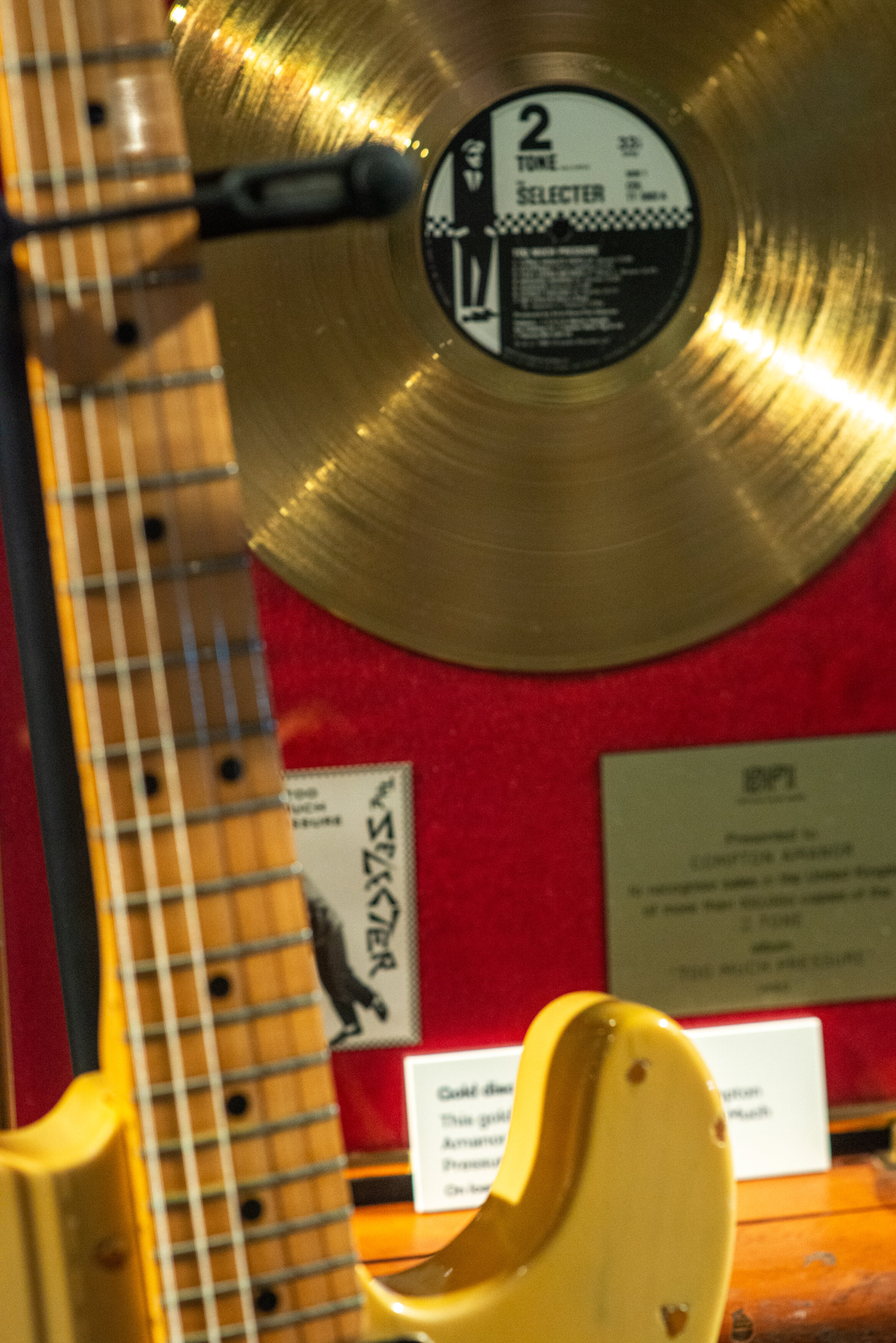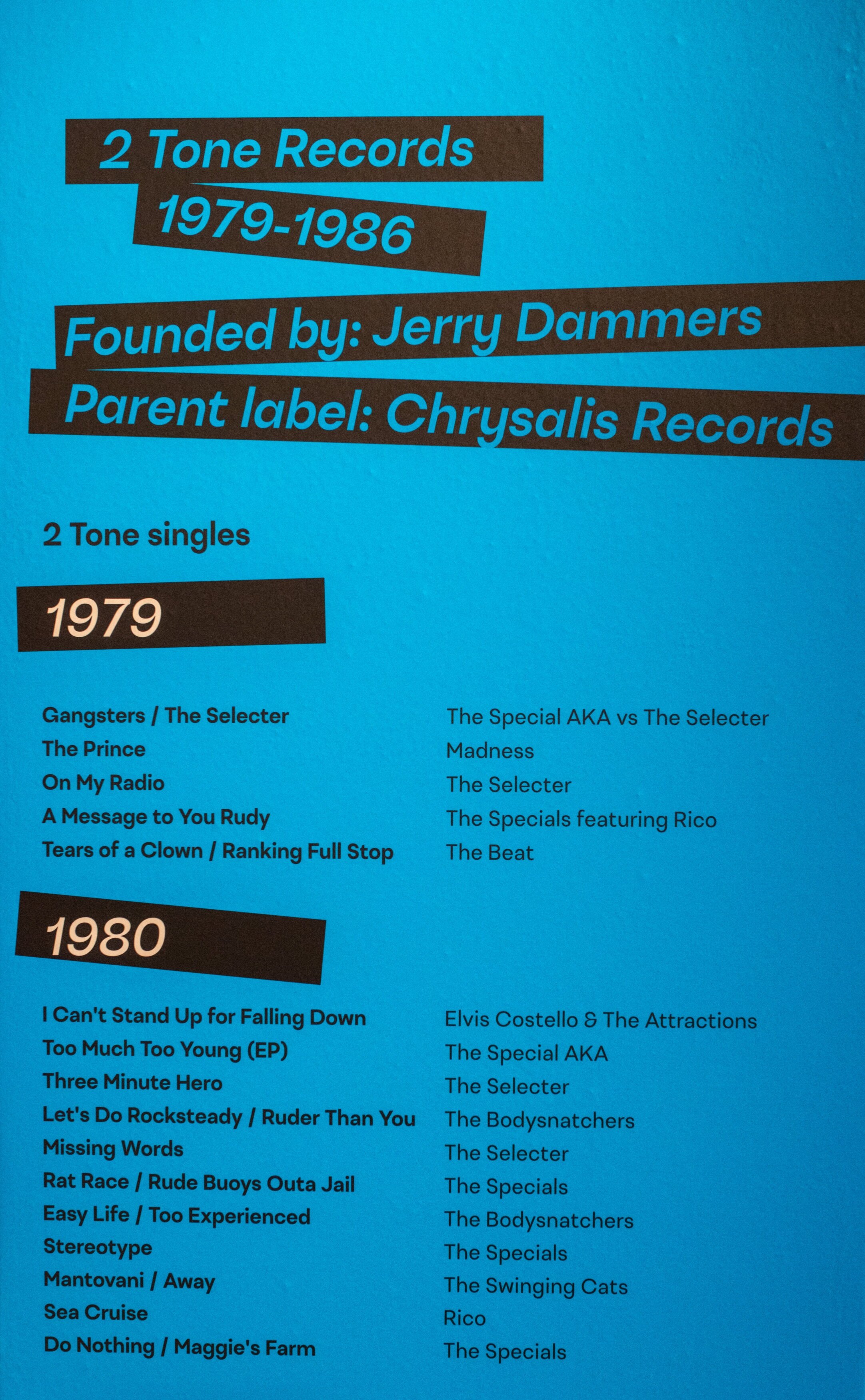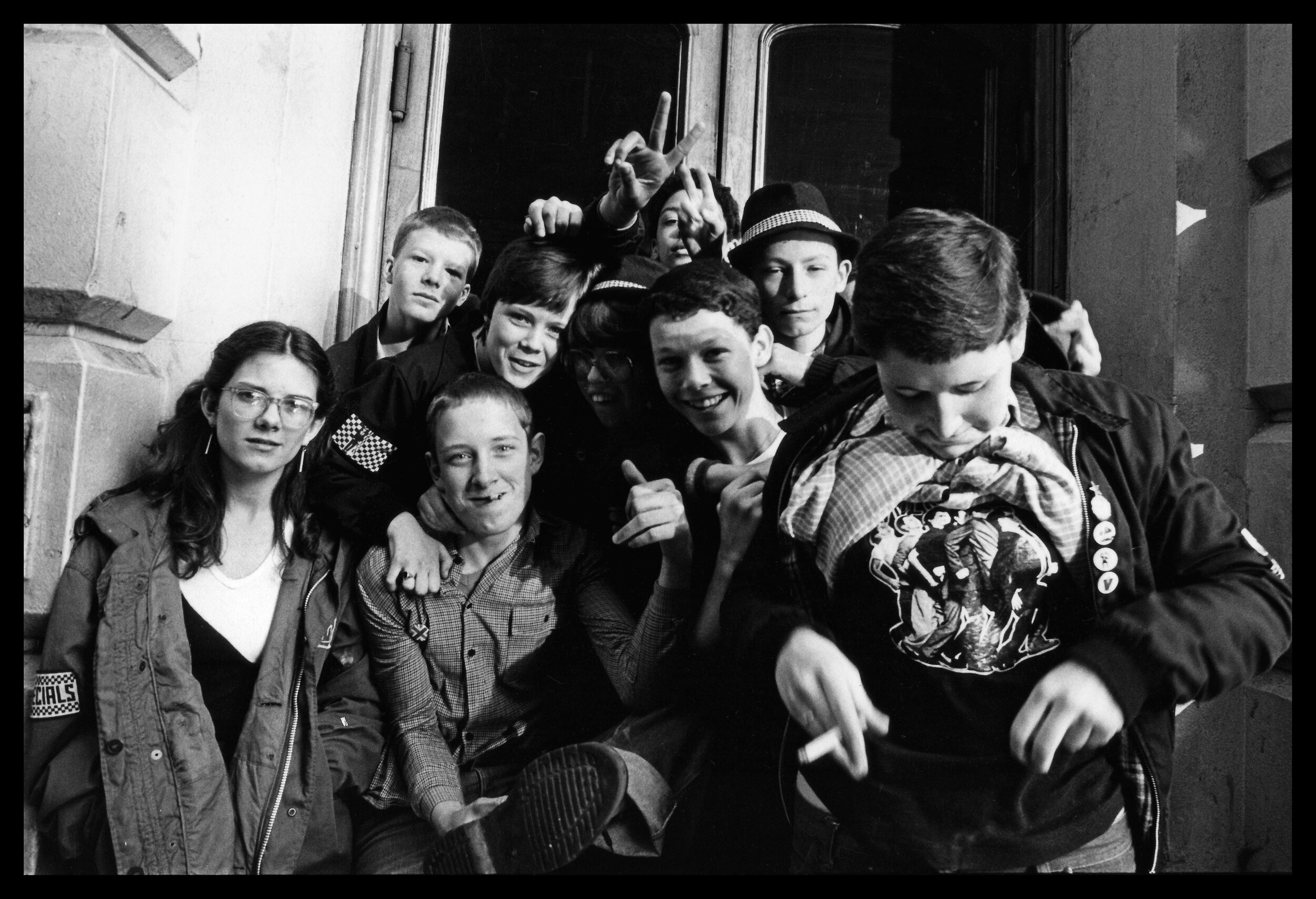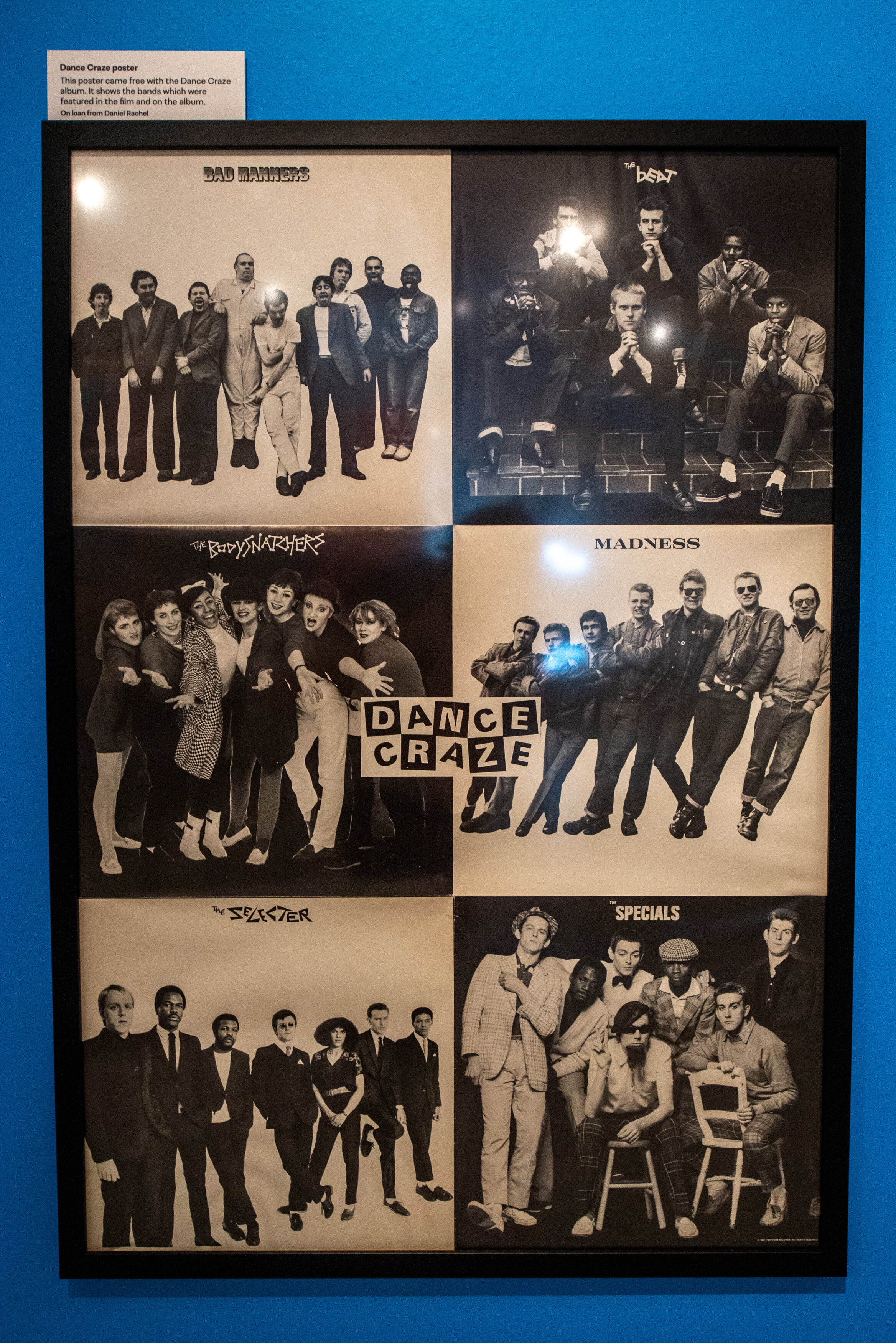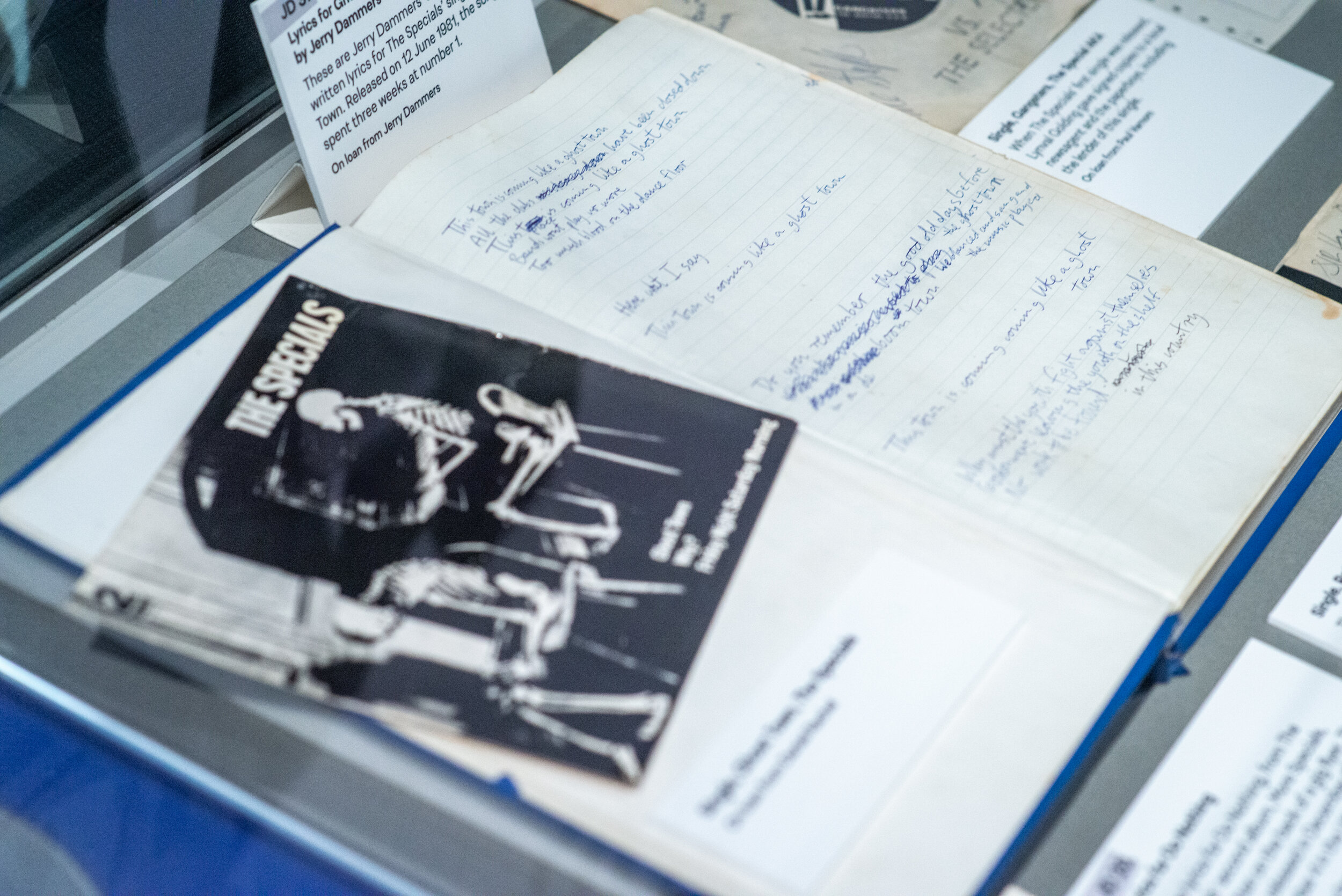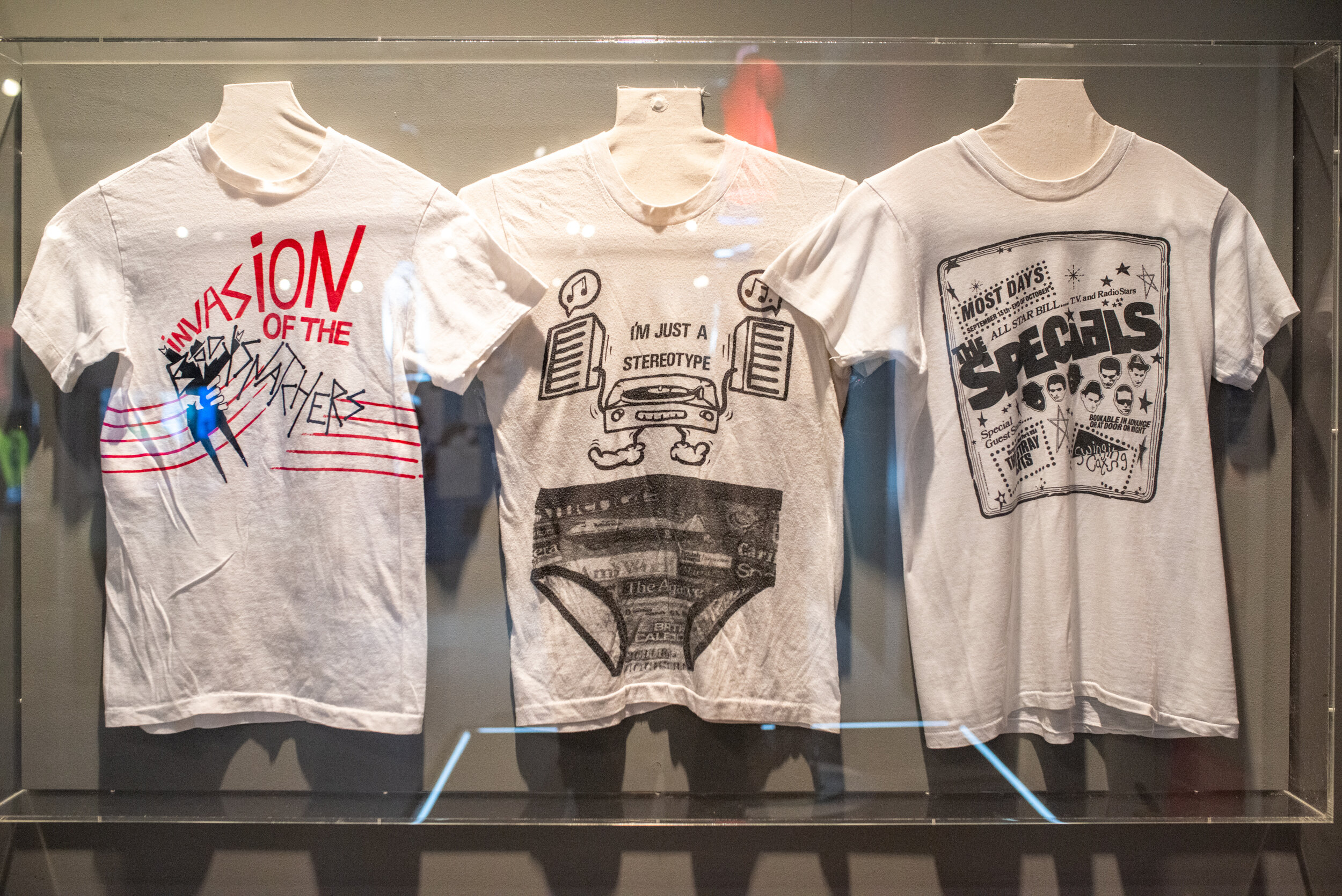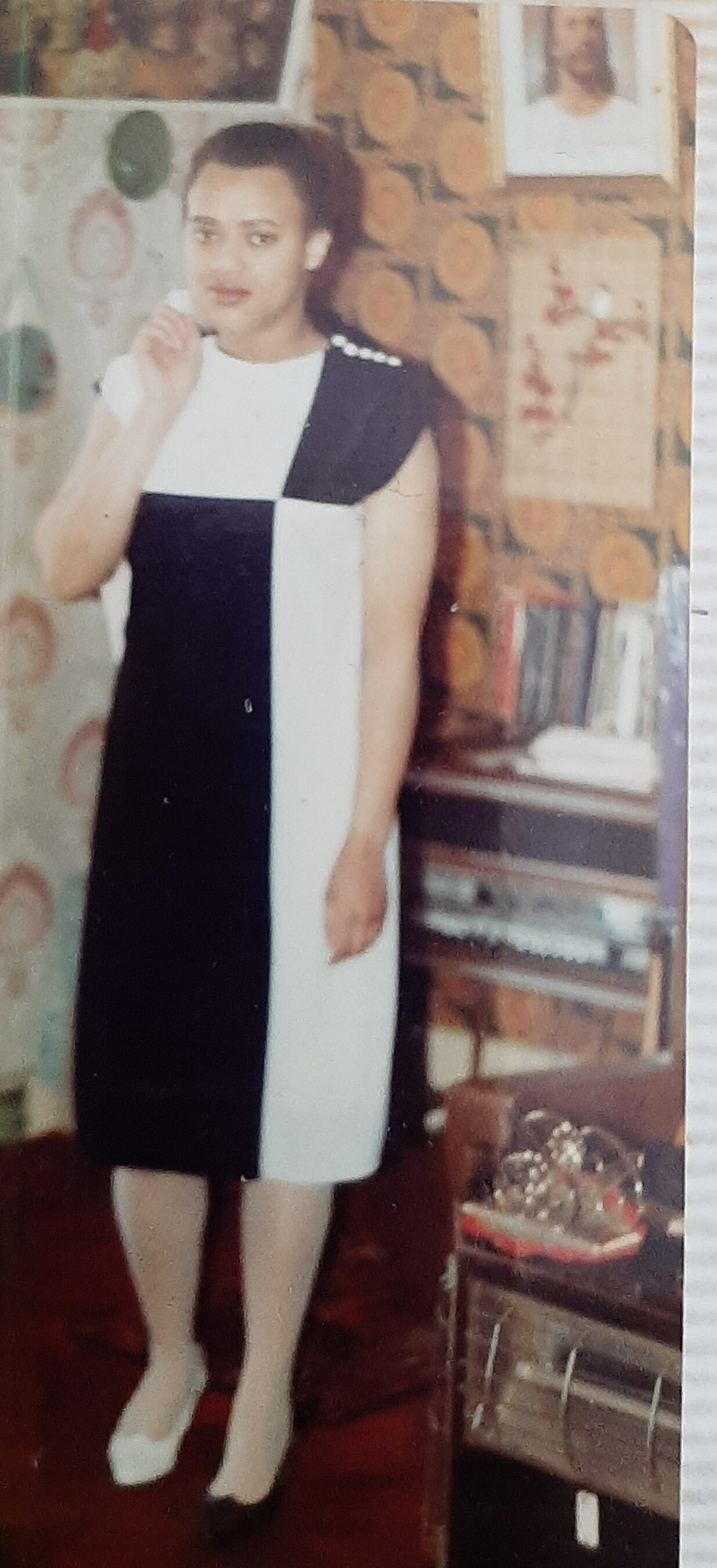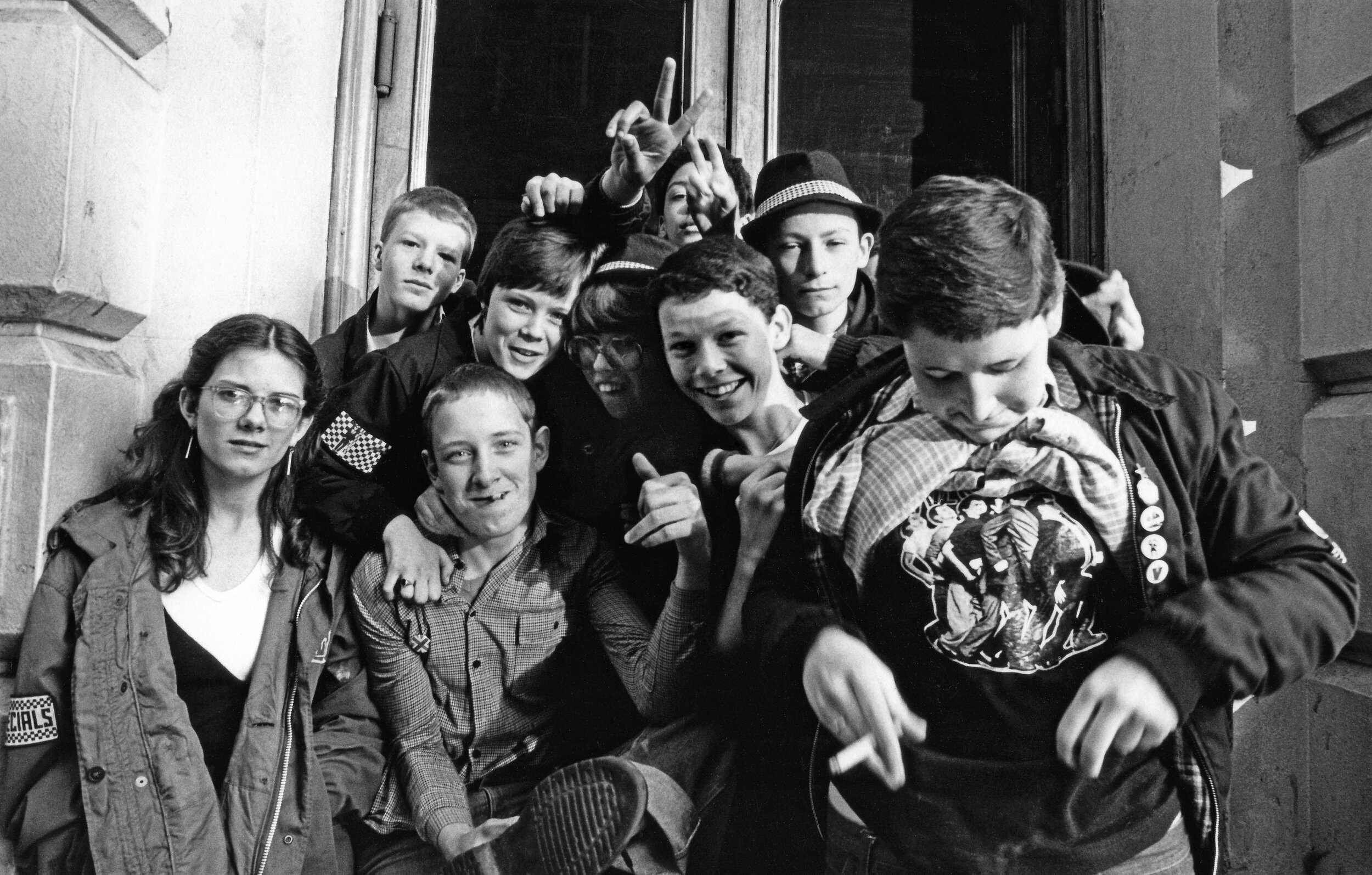
2 Tone: Lives & Legacies
Herbert Art Gallery & Museum
28 May - 12 September 2021
The first ever major exhibition in the UK devoted solely to the 2 Tone music sensation.
The 2 Tone sound originated in Coventry’s thriving music scene of the 1970s. The legendary 2 Tone record label was founded in 1979 by Jerry Dammers of The Specials. Alongside the iconic tunes there was a desire to transcend and defuse racial tensions in Britain at that time.
A tour of the exhibition - led by curators Martin Roberts & Ali Wells - can be watched below.
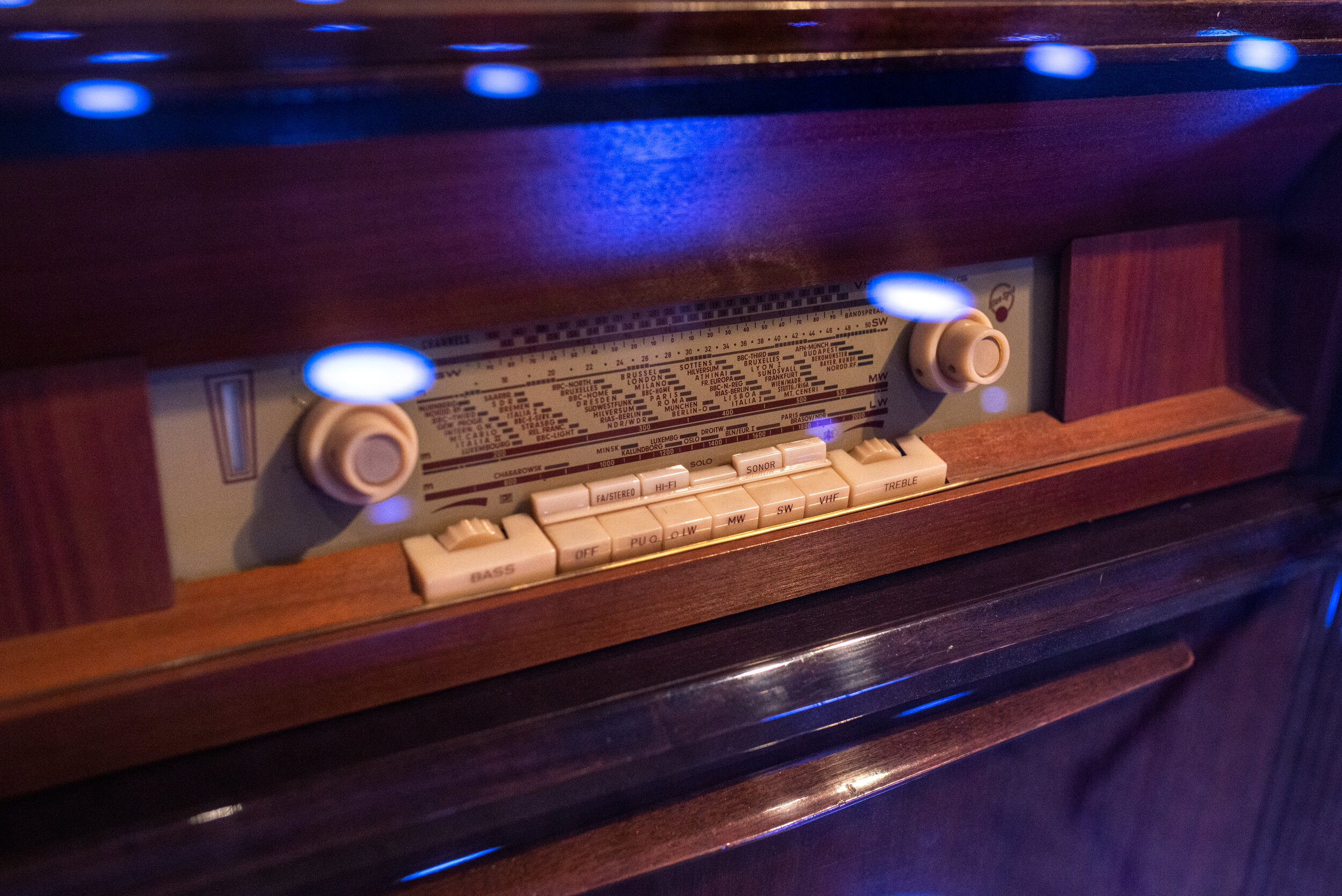
Ghost Town
Britain in the 1970s seemed to be in a state of continuous crisis, but in the wintry early months of 1979, the country felt close to outright collapse. Strikes disrupted basic services, filling city streets with mounds of garbage. Far right movements marched and clashed with counter-protestors. Geopolitically, things looked alarming too: renewed tensions between NATO and the Soviet Bloc revived fears of nuclear destruction, inspiring young people like me to join CND just like our parents had marched against the Bomb in the 1950s.
As unemployment steadily rose, Thatcher and the Conservative opposition campaigned against the rudderless government under the slogan ‘Labour Isn’t Working’ - only to implement, after a landslide election victory in May ’79, economic policies that ultimately tripled the jobless figures, accelerated the deindustrialisation of Britain, and condemned a generation of youth to hopelessness.
Like many in the punk generation, Jerry Dammers – founder of the Coventry Automatics, soon to be renamed The Specials – initially looked to Jamaican music as the righteous model of militancy and spiritual uplift embedded in a mighty groove. But after struggling to create his own punk-reggae hybrid, Dammers decided to rewind the clock to an earlier form of Jamaican pop: the jumpy rhythms of ‘60s ska. The band found their sound just at the point when punk split up into arty experimentalists versus rabble-rousing Oi!. The Specials fulfilled the emerging youth demand for a new style that kept the edge, energy and combative social awareness of punk, but was danceable and sharply-dressed. The group and their 2 Tone label put Coventry on the pop map for the first time, turning the motor city into the engine of the British music scene at the dawn of the Thatcher era.”
— Simon Reynolds
Author of postpunk history, Rip It Up and Start Again
Image © Toni Tye
“It’s because Coventry had so many problems and was so frustrating in the ‘70s that provided the impetus and the incentive for us to do it ourselves and that was what happened and it was a genuine thing from the ground up, from the streets.”
— Neol Davies, The Selecter
A number of musical influences went into forming the 2 Tone sound, but the two most significant ones were Jamaican ska and punk rock.
2 Tone founder Jerry Dammers’ initial plan was to combine punk rock with reggae, but the different tempos of the two types of music did not blend very well. Instead he turned to ska which was faster than reggae and fused much better with punk.
Other members of the bands contributed influences from different types of music, such as rock, blues or disco.
The migrants who arrived in Britain from the Caribbean in the 1950s and ‘60s brought with them music from their homeland, including reggae and ska. This was often played on homemade sound systems at house parties and clubs. In Coventry the Police Ballroom and the Railway Club at Holbrooks became popular venues for Caribbean music events. The music soon became popular with British music fans, especially mods and skinheads.
Simultaneously, punk rock expressed the frustration and anger of many young people in the mid-1970s.
In 1976 The Sex Pistols released the single Anarchy in the UK and toured with The Clash and The Damned, though most of the gigs were cancelled amid fears of violence. By the late 1970s punk had begun to split into new types of music.
Coventry also had a lively music scene which produced several punk bands. One of the first was The Wild Boys. Their line-up included Roddy ‘Radiation’ Byers who later joined The Specials. Coventry’s best-known punk band was Squad, whose original singer Terry Hall also joined The Specials. Squad released two singles, Millionaire and Red Alert, but are best remembered for their loud and raucous live shows.
“At first it didn't really work because we had to keep swapping between punk and reggae. I had a kind of eureka moment where I thought you can combine punk and ska much more effectively because they're both up-tempo music.”
— Jerry Dammers, The Specials
2 Tone burst onto the scene against a backdrop of social and political unrest, racial tension and youth alienation. It was also an exciting time for music with punk branching out into new directions and reggae becoming increasingly influential.
Inspired by the fight against racism and the opportunity to blend punk and reggae, Jerry Dammers formed a band made up of Black and white musicians from Coventry. Originally called The Automatics, then The Coventry Automatics, in 1979 they changed their name to The Special AKA, before becoming known as The Specials. The Selecter also emerged from the Coventry music scene, their line up including several former members of reggae band Hard Top 22.
In May 1979 the first 2 Tone release was the single Gangsters by The Specials and The Selecter by The Selecter.
Similar things were happening in other parts of the country, with The Beat in Birmingham and Madness in London both forming part of the ska revival.
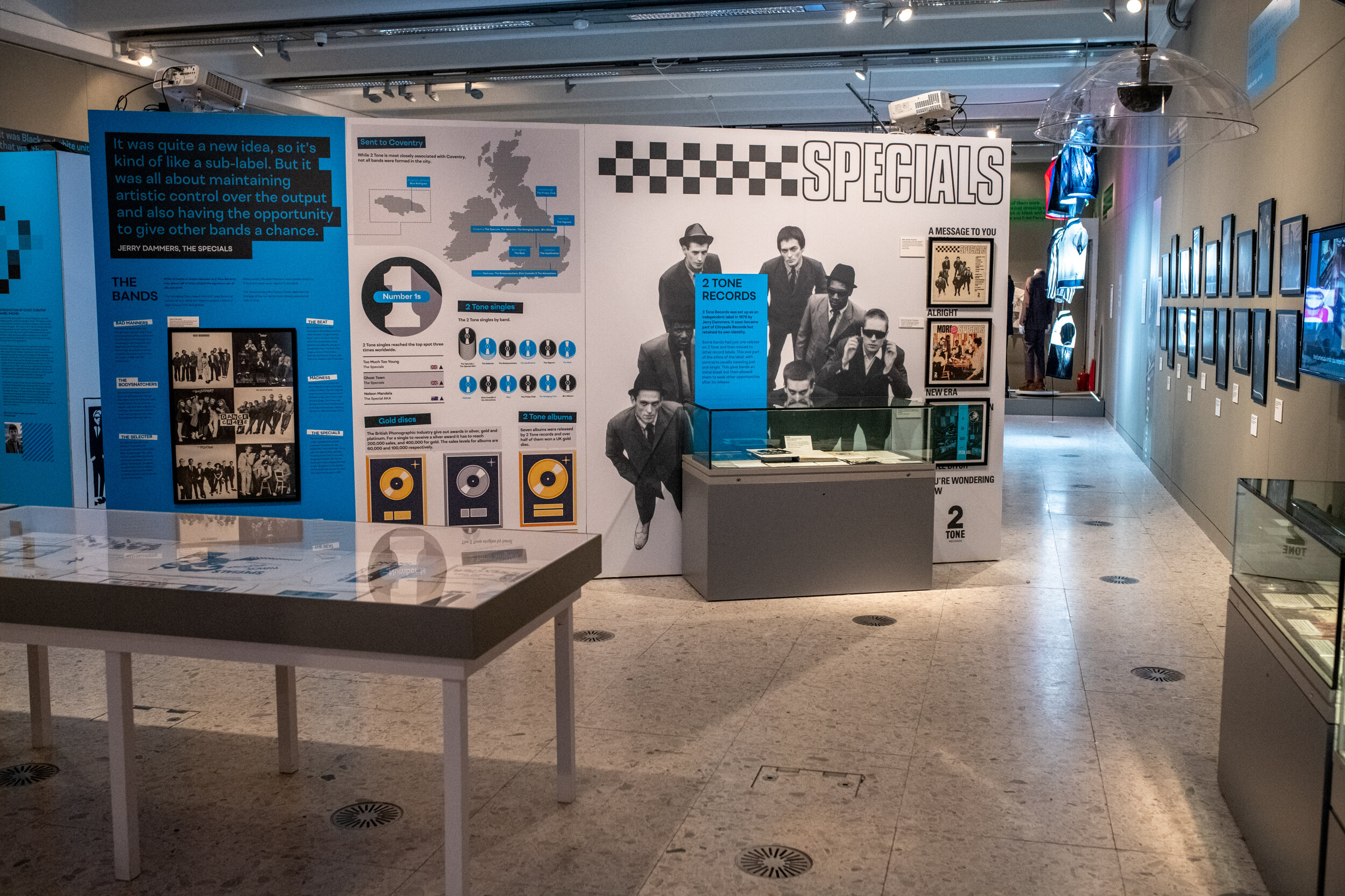
2 Tone
2 Tone Records was set up as an independent label in 1979 by Jerry Dammers. It soon became part of Chrysalis Records but retained its own identity.
Some bands had just one release on 2 Tone and then moved to other record labels. This was part of the ethos of the label, with contracts usually covering just one single. This gave bands an initial break but then allowed them to seek other opportunities after its release.
“It was the infectious rhythms: the pumping bass; the dual chopping guitars, and the deadpan vocals. The dapper outfits: 3-button jackets, ankle-cut Sta-Prest trousers, pork-pie hats and black brogues. But most of all it was the songs; talking of teenage pregnancy and violence on the streets; of ghost dances and red radios; and calls for Black and white to unite; clothes, music and social politics wrapped up in a British youth movement that landed on Top of the Pops and swept through the school playground.
2 Tone offered a way to look at the world and a soundtrack to dance to. In Birmingham you made your choices: Blues or Villa, Swap Shop or Tiswas, rude boy or mod. It was the thrill of decorating your Harrington with badges of The Specials, Madness and The Beat. Of hunting down cheap Fred Perrys in the Bull Ring market and scratched up copies of Prince Buster singles. 2 Tone inspired you to look back and discover the cultural riches of ‘60s Jamaica. But it also documented the battleground of a new British landscape where the terror of neo-Nazis selling fascist literature outside your school gates or on football terraces was usurped by messages of anti-racism and promises of seductive Beat Girls.
I sketched my own 2 Tone man on the school walls, imagined myself at the Nite Klub and blushed at the thought of p*** stains on my shoes. I learnt about the imprisoned Nelson Mandela, the horror of rape and bombs dropping on Beirut. 2 Tone carved a deep groove in my soul and thanks to the oxygen of airplay on Radio 1, the mind-blowing visuals ofDance Craze and the glossy pages of Smash Hits my black-and-white world was ignited with a life-affirming blast of colourful brilliance.
Born into 2 Tone. Grown-up a rude boy.”
— Daniel Rachel
Author of Walls Come Tumbling Down (Winner of the Penderyn Music Prize)
Many of the items on display in this exhibition are on loan from Jerry Dammers’ personal collection.
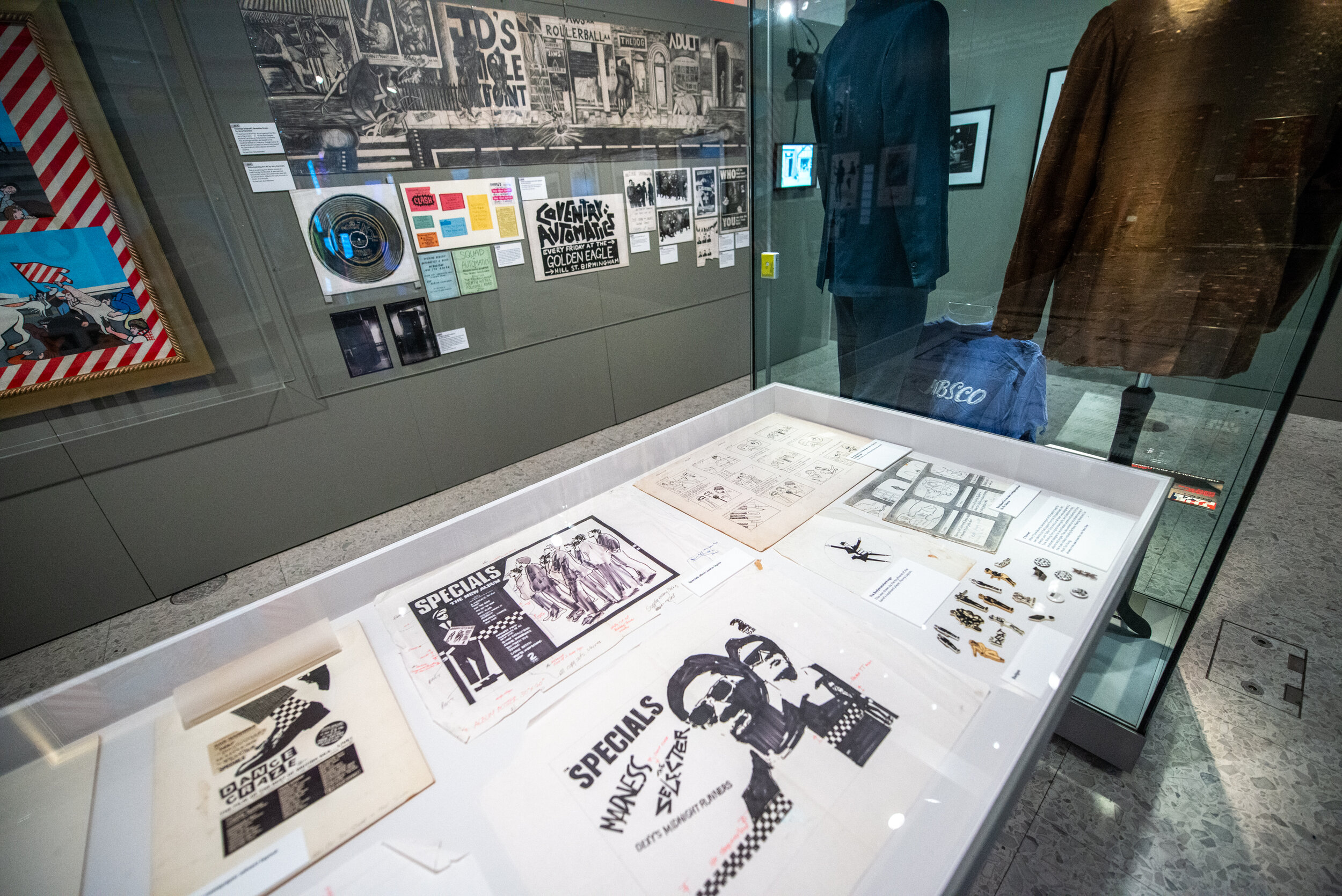
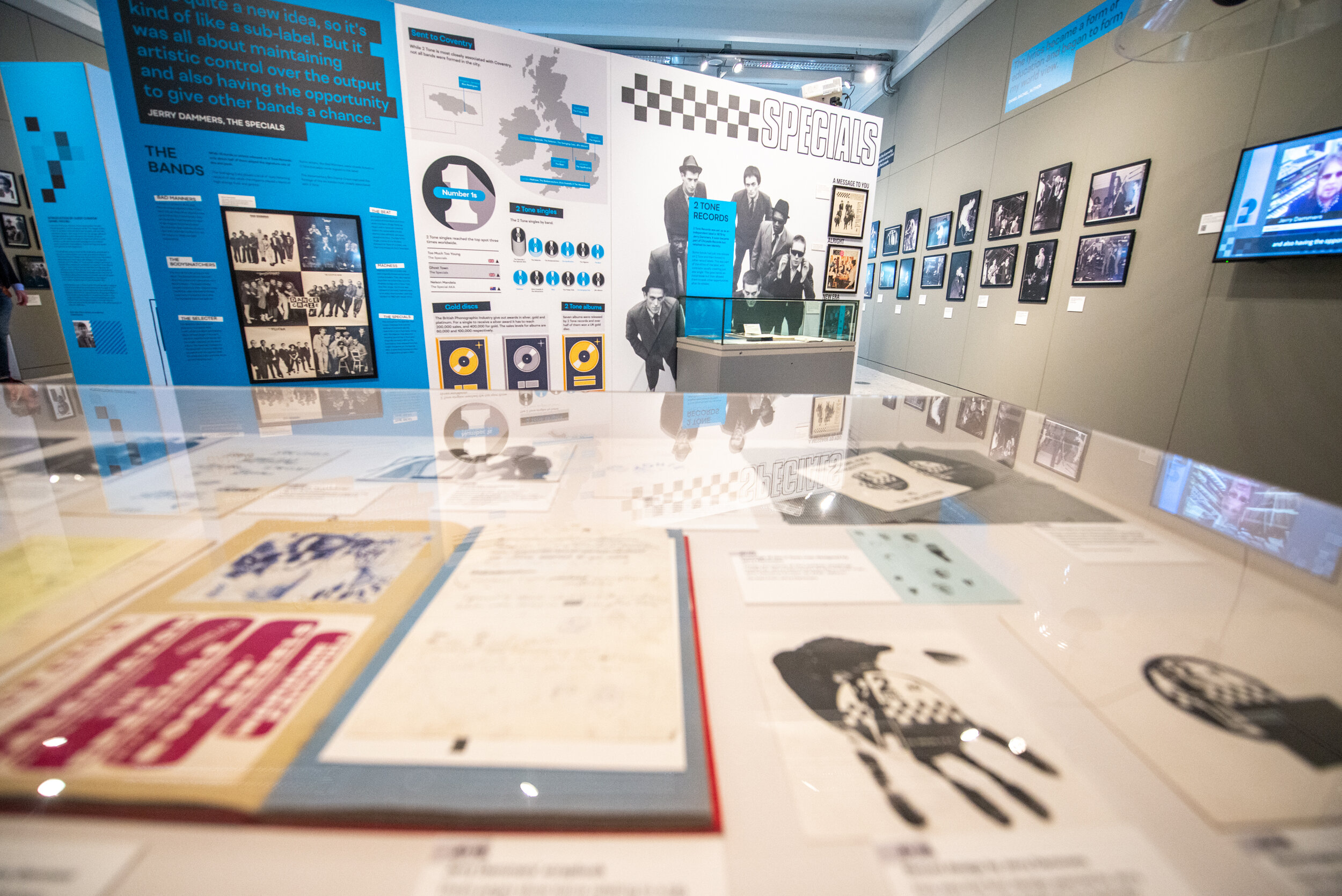
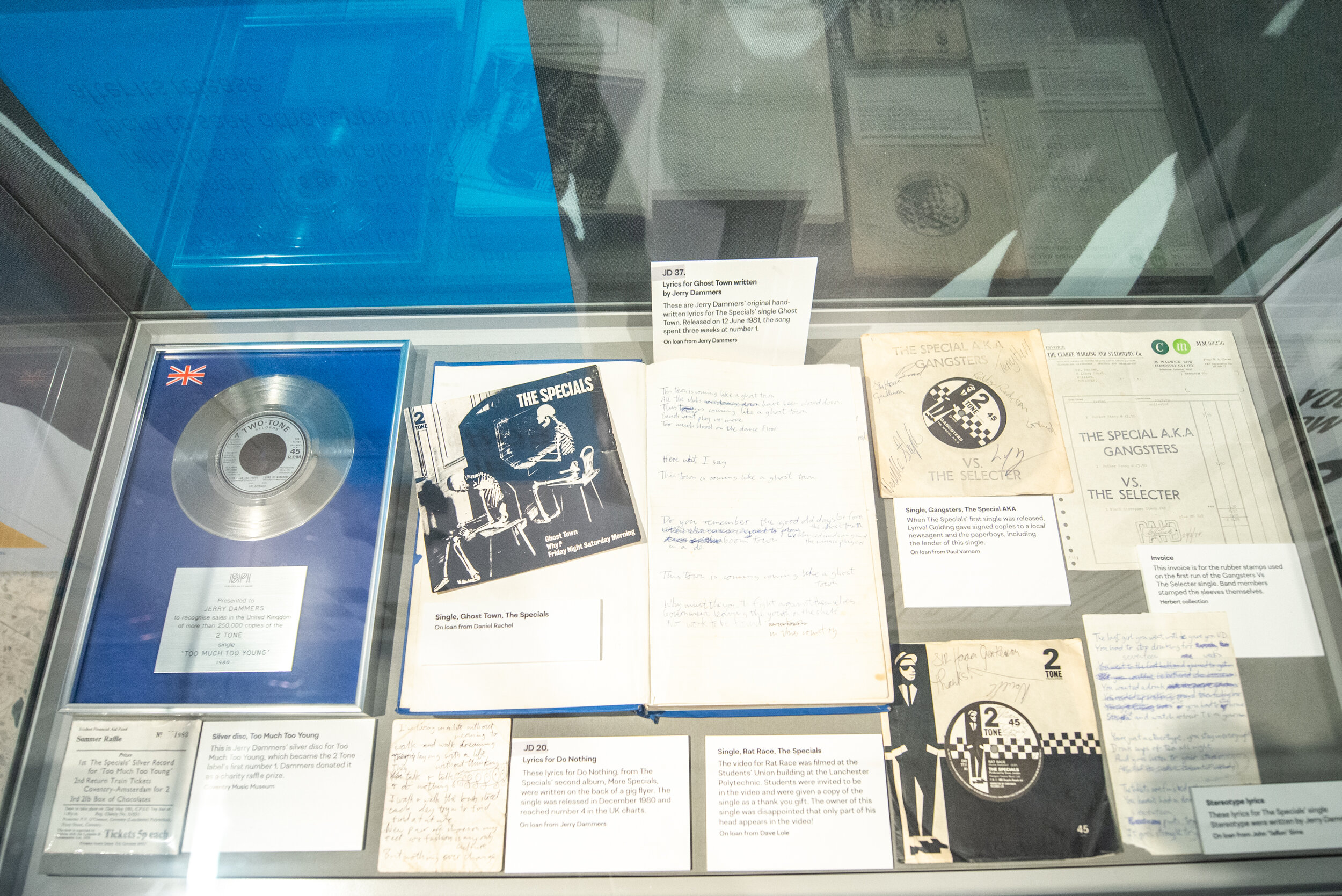
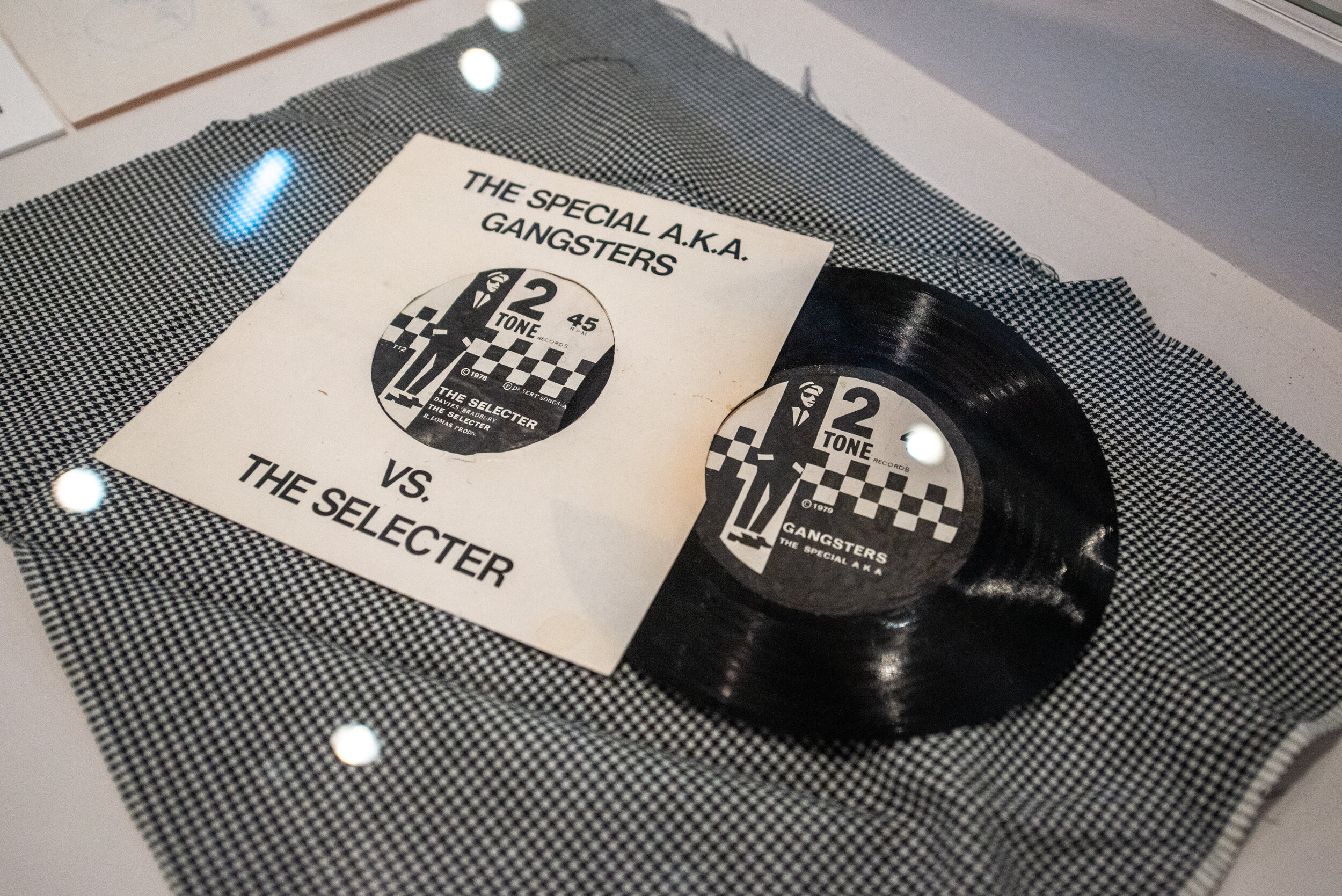
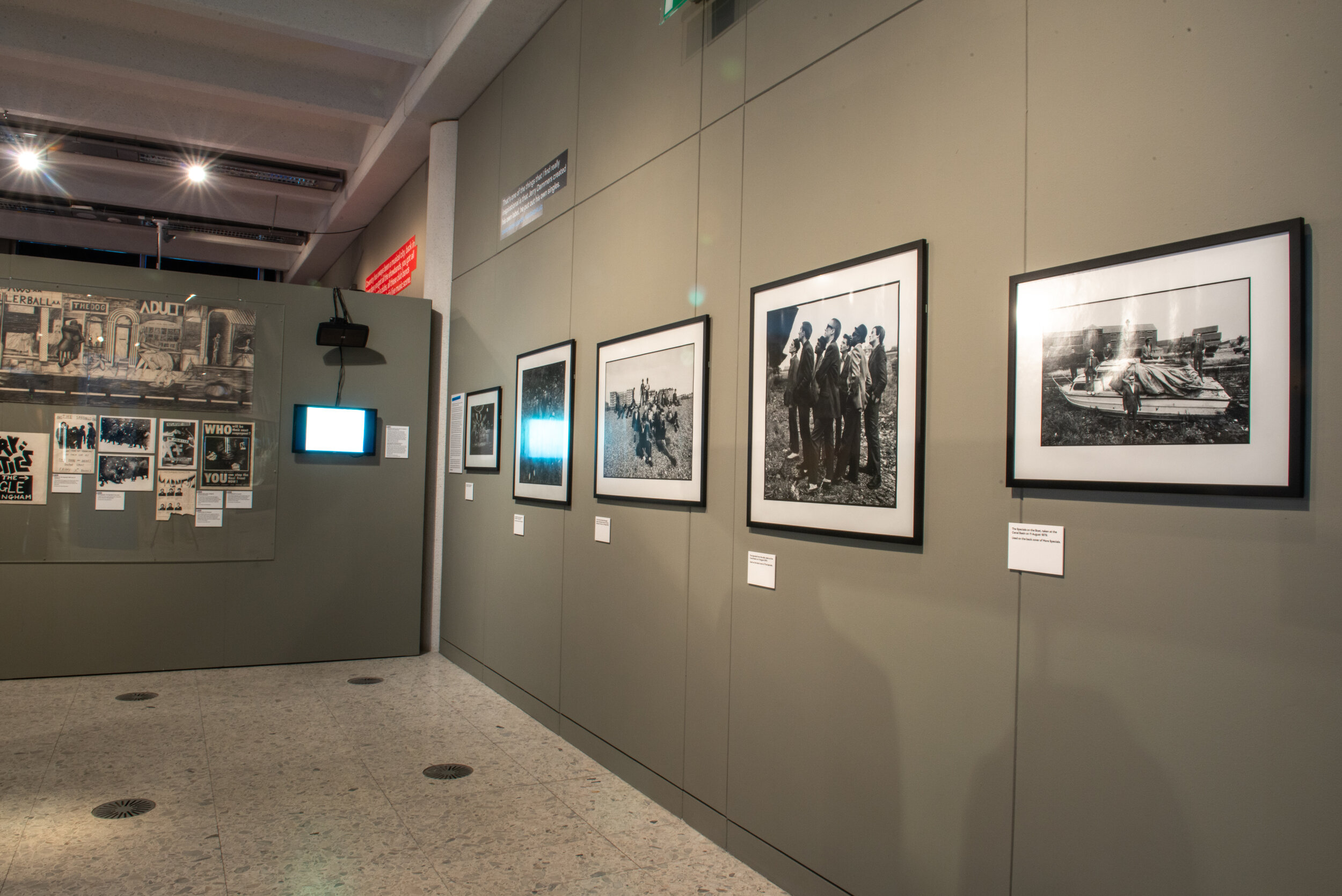
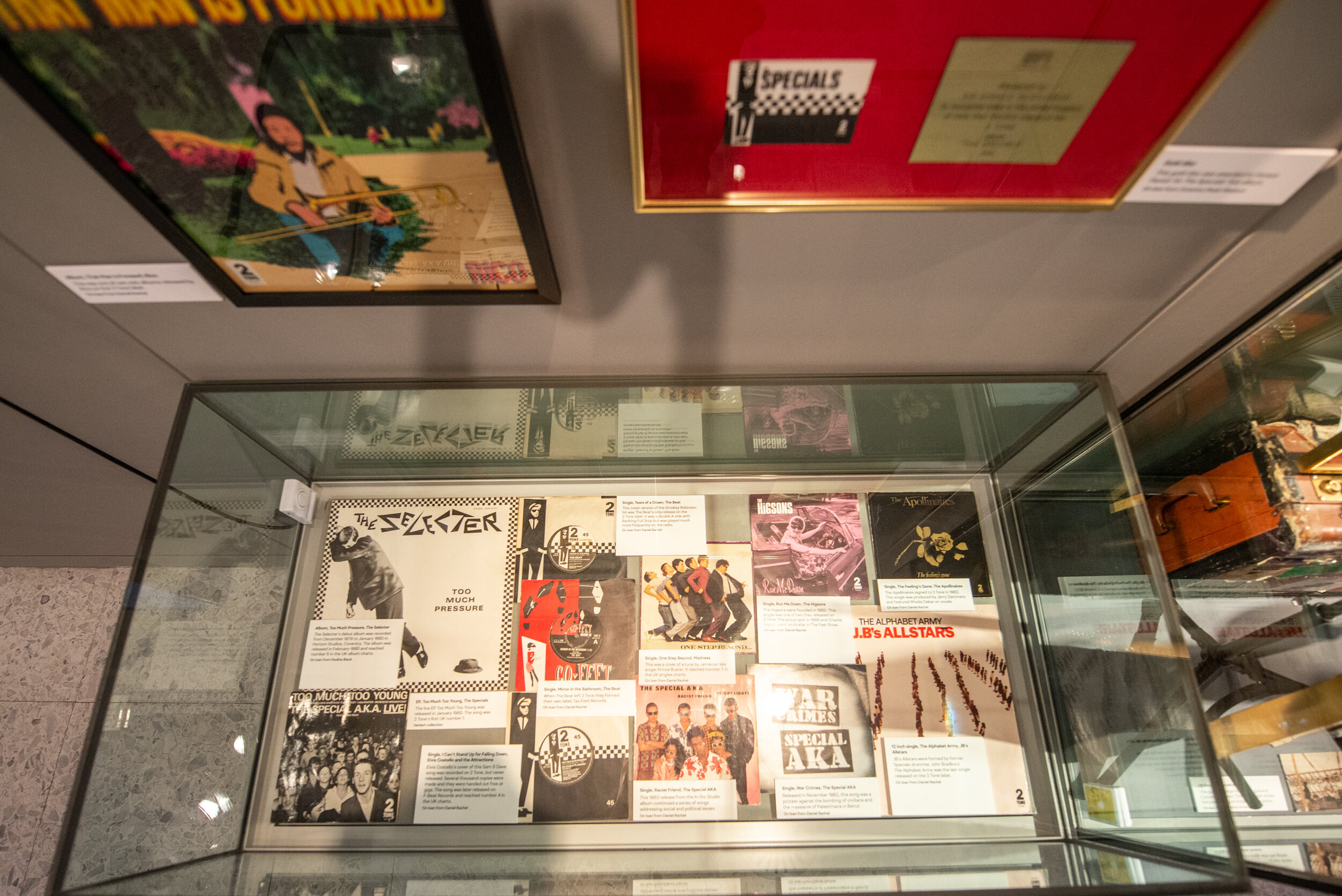
A key feature of the 2 Tone movement was its strong visual identity, created by Jerry Dammers as part of his plan to form a new movement with its own distinctive look and sound.
Dammers’ contributions to the exhibition include artworks and films made by him when at art college, photographs, posters, record and label designs, original lyrics for ‘Do Nothing’ written on the back of a gig flyer, and the original lyrics to ‘Ghost Town’, as well as his personal reflections in his own words on the items and their significance.
“That's one of the things that I find really inspirational is that Jerry Dammers created his own label, he put out his own singles. You know all that stuff where I think it's really cool to create your own culture, create your own scene.”
— David Kirchgessner, Mustard Plug
“It was quite a new idea, so it's kind of like a sub-label. But it was all about maintaining artistic control over the output and also having the opportunity to give other bands a chance.”
— Jerry Dammers, The Specials
While 13 bands or artists released on 2 Tone Records, only about half of them played the signature mix of ska and punk. The Swinging Cats played a kind of ‘easy listening’ version of ska, while the Higsons played a blend of high energy funk and groove. Some artists, like Bad Manners, were closely linked to 2 Tone but were never signed to the label.
The documentary film Dance Craze captured live footage of the six bands most closely associated with 2 Tone and British ska.
The Bands
Formed in London in 1976, Bad Manners never signed to the 2 Tone label though they often played on the same bill as the 2 Tone bands. They are probably most famous for their long-tongued frontman Buster Bloodvessel. Special Brew and Can Can both reached number 3 in the UK charts, in 1980 and 1981 respectively.
Birmingham band The Beat consisted of three Black and three white members. Singer Ranking Roger used a Jamaican toasting style in his vocals while a brass element was added by Jamaican saxophonist Saxa. The Beat’s first single, a cover of the Smokey Robinson hit Tears of a Clown, was their only release on the 2 Tone label.
The only all-female group on the label, The Bodysnatchers formed after Nicky Summers placed an ad in Melody Maker. The band initially played covers but their original song, The Boiler, was released by Rhoda Dakar with the Special AKA after The Bodysnatchers had split up.
Madness formed in London and were originally known as the North London Invaders. Their ska inspired sound led Jerry Dammers to invite Madness to sign with 2 Tone. Only their first single, The Prince, was released on the label. Madness went on to enjoy chart success, reaching number 1 in 1982 with House of Fun.
The Selecter were the most diverse 2 Tone band, with multi-racial members and Pauline Black as lead singer. The name was first used by Neol Davies for the single released as the other side to The Specials’ Gangsters. The band left 2 Tone in 1980 but remained with the parent label Chrysalis Records until they broke up the following year.
The concept for The Specials, their music, message, look and the makeup of the band was the brainchild of Jerry Dammers. Along with The Selecter they were the founding band of the 2 Tone label. Originally formed in 1977 as The Automatics, they released their first single, Gangsters, as The Special AKA, a name they returned to after the original line-up split in 1981.
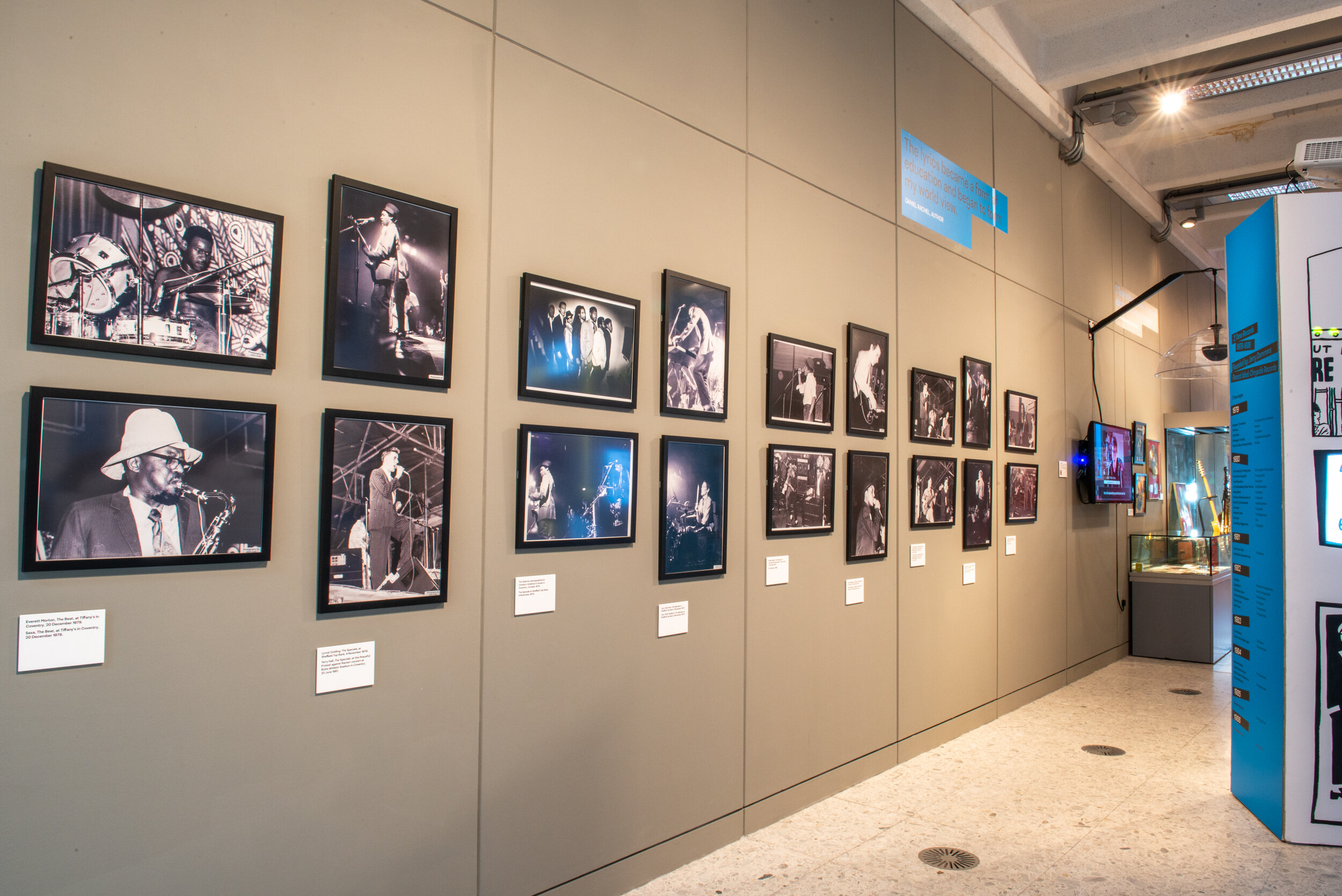
2 Tone Live
2 Tone was famous for the live shows, which often featured two or three bands. They were incredibly lively and energetic and the atmosphere was electric. The audiences played a huge part in this, dancing throughout and often joining the bands on stage.
“Chaos, total chaos, a kind of contained riot.”
— Jerry Dammers describes a 2 Tone gig
In autumn 1979 The Specials, The Selecter and Madness embarked on the first 2 Tone Tour, which took them to venues across Britain. Midway through the tour Madness left to fulfil other commitments and were replaced by Dexys Midnight Runners.
The band members, management and support team travelled together on one tour bus. There was a strong sense of camaraderie amongst the bands, but once on stage it could get quite competitive, with the bands all trying to outdo each other. The audience danced so energetically that in some venues the place was literally shaking. At the end of each gig all the bands would come on stage together for the last number, where they were often joined by fans.
On 29 November 1979 the 2 Tone Tour arrived in Coventry to play at Tiffany’s. For The Specials and The Selecter this was a triumphant homecoming.
The success of the first 2 Tone Tour set a pattern for two or three bands to tour jointly, travelling together and playing on the same bill.
In February 1980 the second 2 Tone Tour began, headlined by The Selecter with support from The Bodysnatchers and Holly and the Italians. The latter band dropped out to be replaced by Coventry band the Swinging Cats. The Seaside Specials Tour followed in June 1980 with The Specials joined by The Bodysnatchers and the Go-Go’s, to play seaside venues around Britain.
In 1980 The Specials and The Selecter also made separate tours of the US. They were enthusiastically welcomed by fans in places like New York and Los Angeles but the gruelling schedule took its toll on the band members. Later the same year The Specials made a highly successful tour of Japan.
““Those gigs when we were on the 2 Tone Tour were just mad, they were just off the scale, when you say the joint was jumping, you could see some of the balconies bouncing under the weight of people… ”
— Neol Davies, The Selecter
Images © Toni Tye
The 2 Tone gigs were usually packed and the audiences were incredibly lively and enthusiastic, dancing – or skanking - along to the music from the start.
One of the features of the gigs was the fans joining the band onstage. This was part of the 2 Tone philosophy of equality between the bands and the fans. Initially it happened at the end of the gig or during the encore, however fans started climbing onstage much earlier in the set and band members became concerned for their own safety and that of the fans.
Some of the 2 Tone gigs were affected by the presence of right-wing groups and sometimes violence would break out. When this happened the bands often stopped the gigs to make clear that was not acceptable. Madness gigs were particularly subject to this, but it affected all the bands to some extent. The trouble was widely reported in the press but the band members felt this was often exaggerated.
2 Tone bands played a number of gigs in support of the anti-racism movement. One of the most significant was the concert at the Butts stadium in Coventry on 20 June 1981.
The concert was a response to the murders in Coventry of an Asian student, Satnam Singh Gill, and an Asian doctor, Amal Dharry. The Specials topped the bill alongside other Coventry artists Hazel O’ Connor and the Reluctant Stereotypes. Rumours that the National Front would attempt to disrupt the concert affected the turn out, but it was an important statement of support.
On 4 July The Specials also headlined the Carnival Against Racism in Leeds. This would prove to be the last Rock Against Racism concert.
“At that gig everything came together. People were there because they needed racial harmony in a city that had seen violence, senseless murder…”
— Cathy Hunt, historian
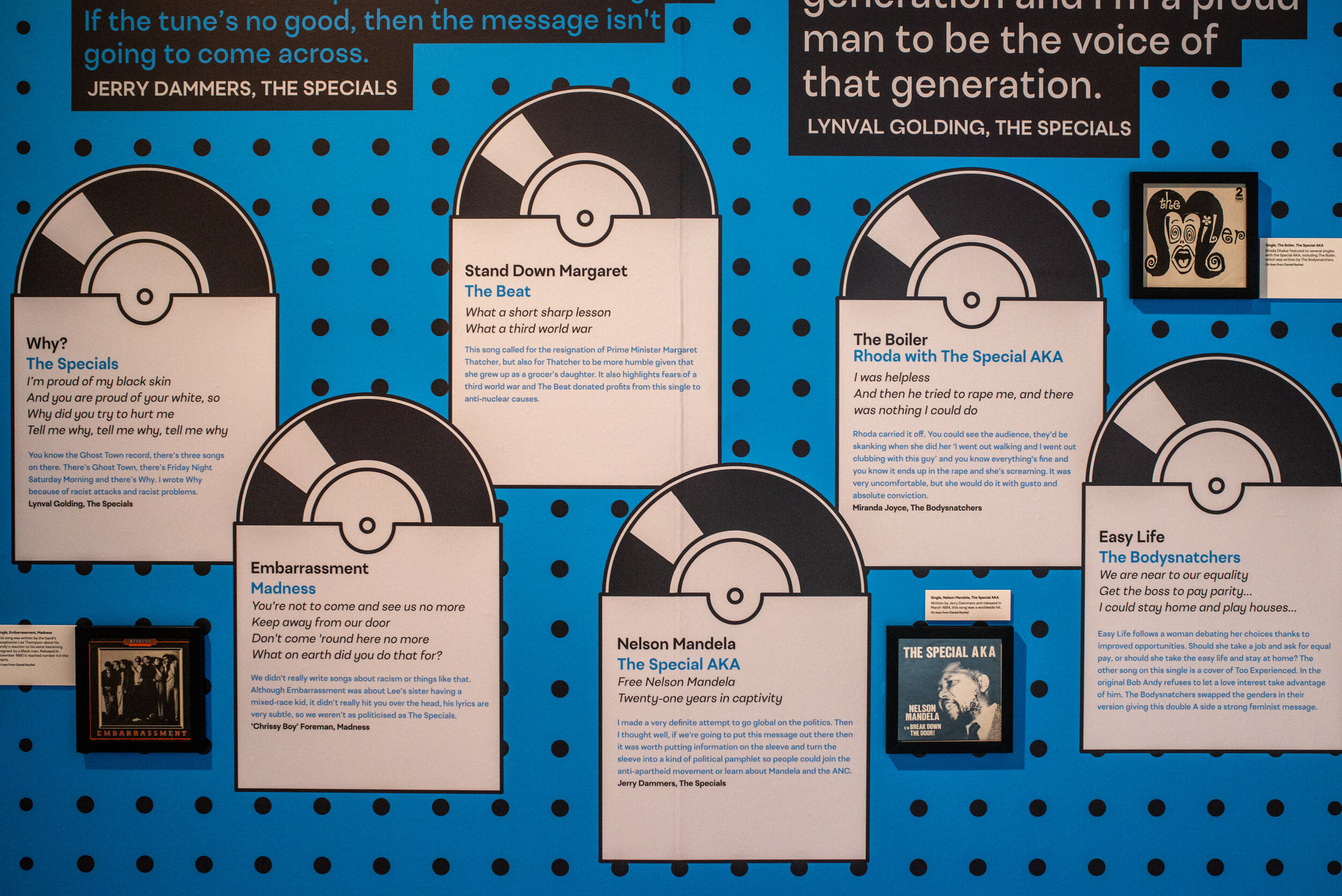
2 Tone Message
While music like punk incited rebellion, 2 Tone was something more, a call to action. The world might be in trouble, but something could be done about it.
Songs tackled racism, politics, conflict, sexism and promoted unity. Some of them protested against the situation in Britain where unemployment was high and young people especially saw few opportunities.
The messages in the lyrics reflected the ethos of the 2 Tone movement as a whole. The 2 Tone sound had its origins in Jamaican ska and British punk music and many of the bands were racially diverse. They were active in movements like Rock Against Racism and some donated profits from their music to causes like the Campaign for Nuclear Disarmament.
“We were the voice of a generation and I’m a proud man to be the voice of that generation.”
— Lynval Golding, The Specials
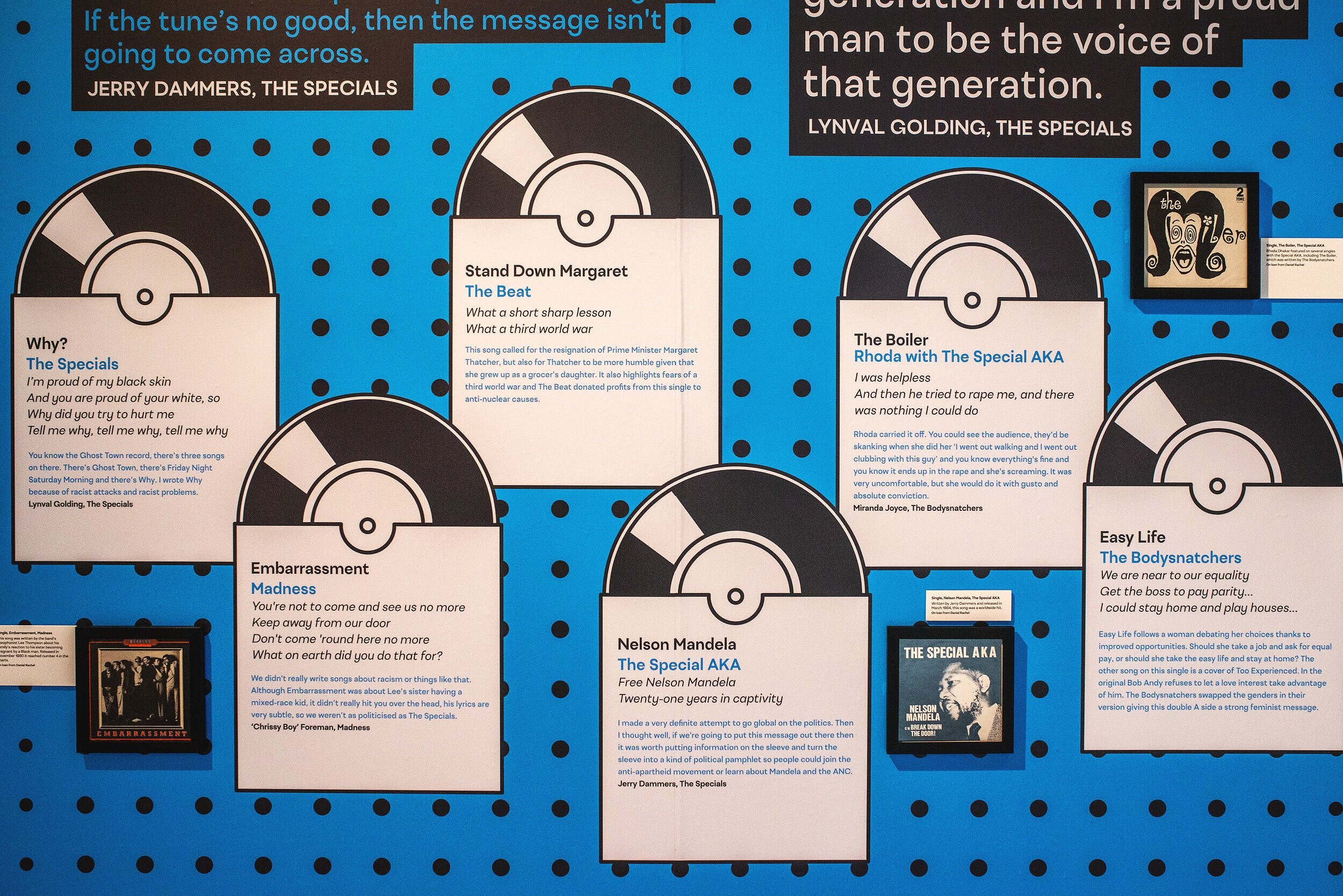
Ghost Town / The Specials / 1981
Why must the youth fight against themselves?
Government leaving the youth on the shelf
Ghost Town was about the decline of industry in Britain and the effects of Thatcherism. While Ghost Town was in the charts there were a series of inner-city riots in England. These were partly in protest against the sus law, a stop and search law which many argued unfairly targeted Black and ethnic minority youths. The Selecter’s album track, Bristol and Miami, addressed similar riots which occurred in 1980 in Britain and the US.
“You know the Ghost Town record, there’s three songs on there. There’s Ghost Town, there’s Friday Night Saturday Morning and there’s Why. I wrote Why because of racist attacks and racist problems.”
— Lynval Golding, The Specials
Racist Tones foregrounds the everyday stories of those at the receiving end of the hostile racist environment, which formed the backdrop to the Two-Tone record label founded in 1979 in Coventry. It delves into the tones and frequencies in which racism was received and lived in this period.
Racist Tones has been distinctively compiled from two modes of storytelling, altering how we imagine places across time in Coventry During the 2021 lockdown, four of us came together online to write our flashbacks of racism from when we were growing up in Coventry, in the seventies and eighties, leading us to form the FOUR WRITERS group. This prompted us to start a dialogue with other people in our kinship networks. These conversations have only just begun...
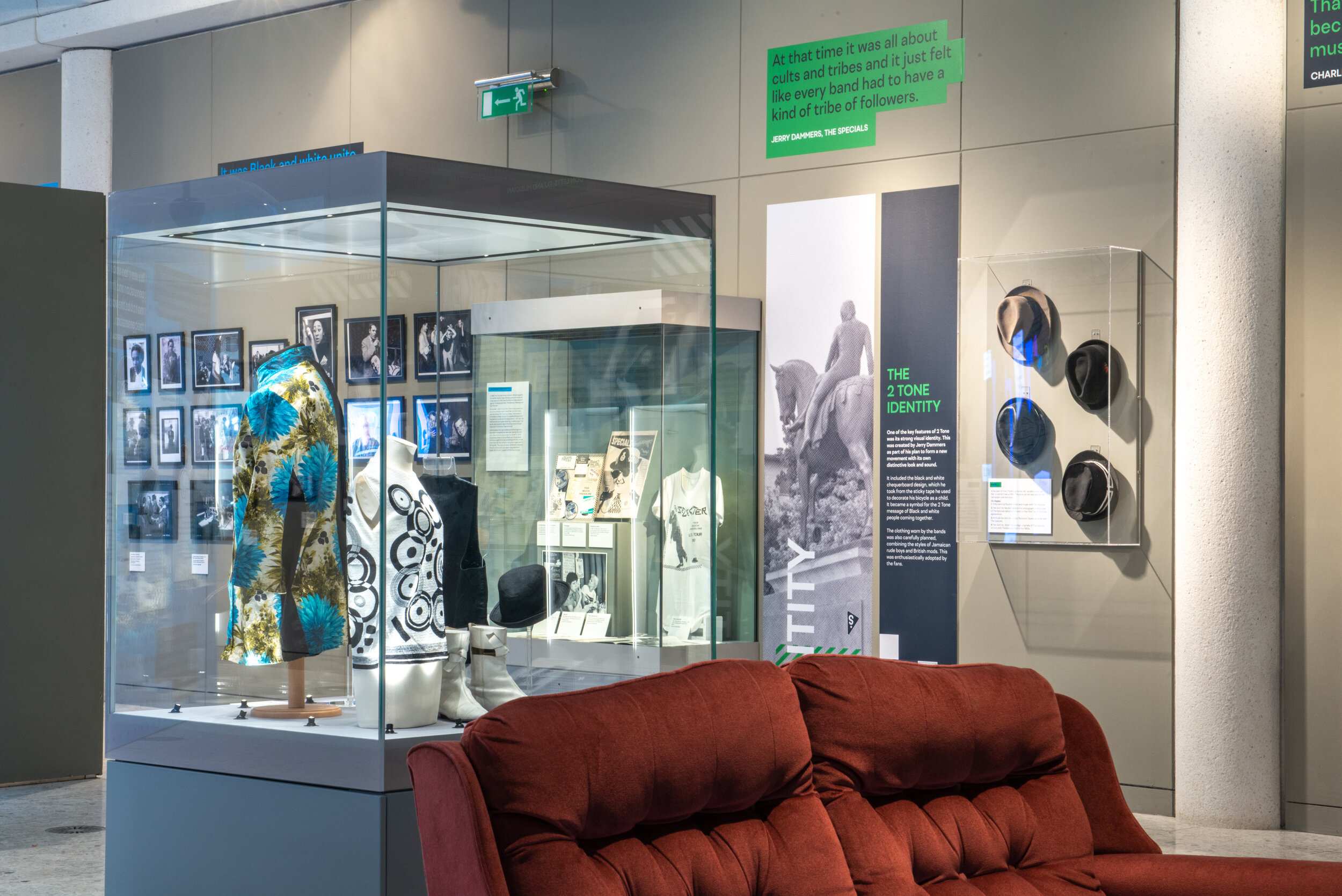
Identity
A key feature of 2 Tone was its strong visual identity created by Jerry Dammers as part of his plan to form a new movement with its own distinctive look and sound. It included the black and white chequerboard design, which he took from the sticky tape he used to decorate his bicycle as a child. It became a symbol for the 2 Tone message of Black and white people coming together.
The clothing worn by the bands was also carefully planned, combining the styles of Jamaican rude boys and British mods. This was enthusiastically adopted by the fans.
Stop your messing around;
Better think of your future,
Time to straighten right out,
Creating problems in town.
— A Message to You Rudy
“These were the lyrics that sparked my interest in 2 Tone. The Specials’ iconic song reached number ten in the UK charts in 1979. Although this was a cover of the 1967 Dandy Livingstone song Rudy a Message to You, The Specials made it their own, adding unique riffs and twists which left an imprint on me and how I saw fashion from the scene.
I was born in 1978 just before the launch of the record label founded by the legendary Jerry Dammers. Growing up, music was always around the house - soul, Motown and reggae were my family’s music of choice. It wasn’t until later, in the 1990s, when I fully appreciated the sound and movement of the cultural phenomenon that is 2 Tone.
Hearing the lyrics to A Message to You echo through the speakers at a blues night I went to secretly (don’t tell my mum!) was incredible. I hadn’t heard a sound like that before with words that I could relate to as a young man. They described the angst and turmoil of life in inner city England. I could relate back to my family’s troubles and life a lot more. This was conscious music, lyrics to awaken your mind and challenge the system and status quo of 1980s Britain.
Looking back there was only ever one sound, one style that I could be part of. 2 Tone is not just an iconic record label, it’s a way of life with its own unique visual identity. That identity – the tonic suit, the iconic Fred Perry polo shirt, the pork pie hat worn at a slight angle and the pin badges all positioned in a precise manner – has proven to be timeless and has been enthusiastically embraced by fans of all ages all over the world.”
— Cory Barrett
Cultural Leader + Curious Director, CBGC Creative Industries Ltd.
The most famous visual symbol of 2 Tone is the iconic figure of the rude boy, known as Walt Jabsco. The character was created by Jerry Dammers and developed by John ‘Teflon’ Sims, designer at Chrysalis records. He was based on a photograph of Pete Tosh from reggae band The Wailers. The name was taken from an old American bowling shirt owned by Dammers.
The Beat adopted the figure of the Beat Girl as their emblem. She was based on a 1960s picture in Melody Maker of a girl dancing next to Jamaican singer Prince Buster. The idea was to attract more women to gigs and send a message to male fans to stop fighting.
Jerry Dammers was keen that the 2 Tone band members dressed in a distinctive way which gave then a unique identity. This combined the fashions of Jamaican rude boys and British mods. It featured a tonic suit worn with a Fred Perry polo shirt or shirt and slim pencil tie, topped off with a pork pie hat, or sometimes a trilby.
The exhibition features hats worn by Pauline Black, Neville Staple, Roddy ‘Radiation’ Byers and ‘Aitch’ Bembridge.
It was an iconic look and everybody could buy into the black and white chequer, they could buy into the tonic suits.
— Pauline Black, The Selecter
For us it was all encompassing which it always is, all youth culture, it was the dancing, it was the clothes, it was the music, everything was about detail.
— Graham ‘Suggs’ McPherson, Madness
When we met The Specials we had kind of like second hand clothes, you know, we used to go and get old suits and stuff like that to try and look a bit smart.
— ‘Chrissy Boy’ Foreman, Madness
Tonic suits made by Marc Griffith.
The Fred Perry polo shirt was an important part of the 2 Tone look.
In 1952, Fred Perry founded the brand, designing his first pique shirt the same year. The shirt, would transcend sportswear to streetwear on the backs of generation after generation of British youth subcultures.
The shirts on display are on loan from Fred Perry Ltd.

The Fans
2 Tone soon developed a loyal and dedicated fan base, who showed their allegiance by adopting the look of the band members. They also wore badges, collected memorabilia, decorated their bedrooms with posters and joined fan clubs. Many of them are still just as enthusiastic today and new generations of fans continue to discover 2 Tone.
We asked fans to send in their pictures of themselves and to tell us what 2 Tone means to them. You can see the results in this display.
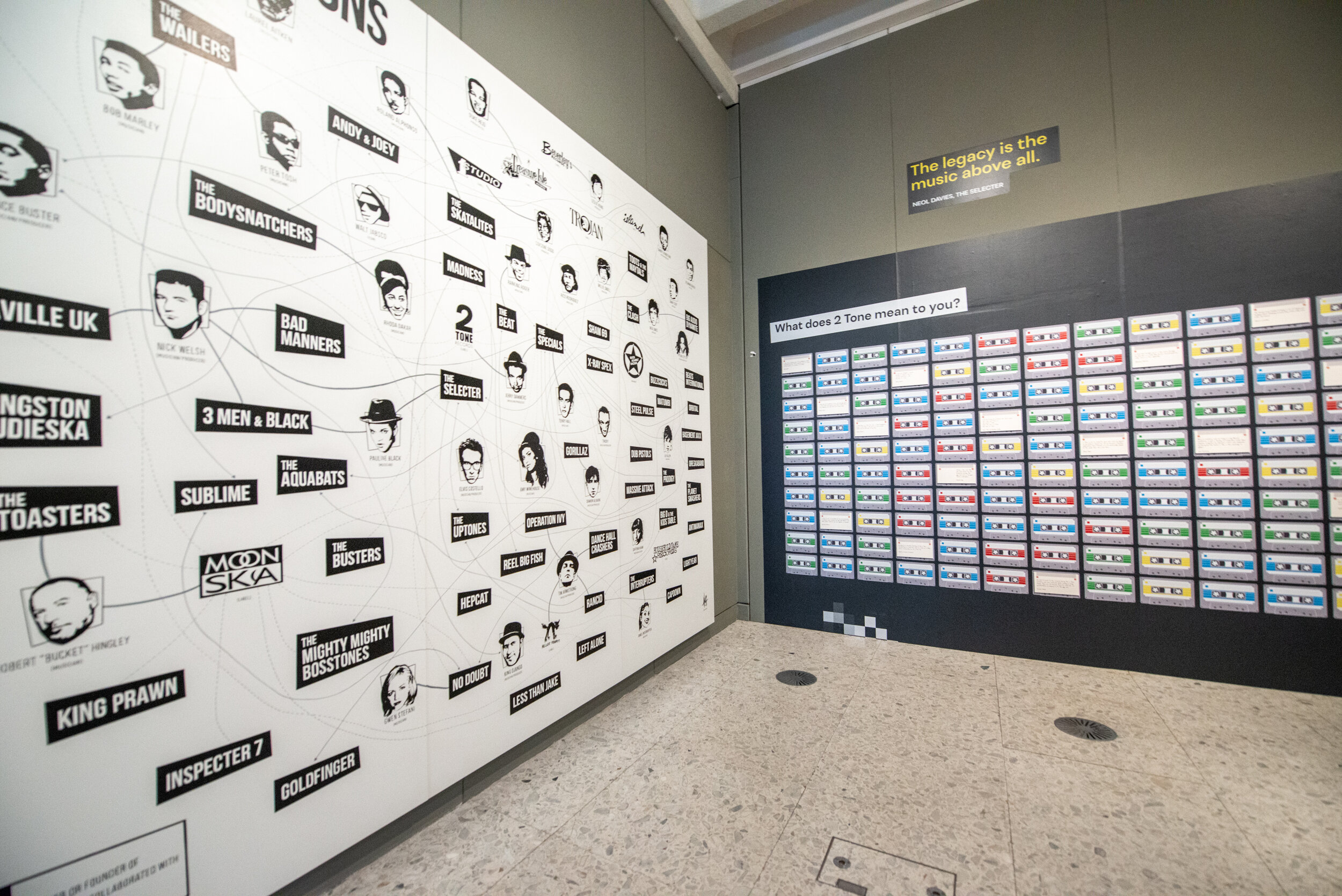
Legacy
The story of 2 Tone continues. Its message remains relevant today and its artists are still active. It not only inspired a third wave of ska in the US, but also influenced musicians in a range of genres across the world.
For the fans of 2 Tone, old and new, the music is timeless. There are tribute bands and there are even 2 Tone cafés in Coventry and Belfast. The Coventry Music Museum celebrates the movement in its home city, and there is also a 2 Tone Trail which features key locations associated with the movement.
“The emergence of MTV in the early 1980s provided a direct line into the homes of teen Americans for new music and different sounds that may not be played on their local commercial radio station. British 2 Tone bands like Madness and The Specials were featured on the channel and across movie soundtracks aimed at the age group. A new generation of kids, spread throughout the US, were turned on to the music.
Southern California, with its warm weather and beautiful beaches, may have seemed like the most unlikely place for this third wave of ska to take root and flourish.
The political messages and upbeat tempos struck a nerve with the racially diverse population of the area. From the early days of Fishbone, a self-pronounced ‘all-black oddball crew’ to No Doubt, with their female lead singer Gwen Stefani, the ideas of possibility and inclusion were at the heart of the movement.
I grew up in Santa Cruz, California, a beachy surf town in the northern part of the state. My first interaction with anything ska happened watching the movie 16 Candles. A scene in the film blasts The Specials’ Little Bitch. What was this music? I had no idea. I did what any tween in the ‘80s did; I took to my banana seat bike, rode down to the ‘edgy’ neighbourhood and began haunting record stores in search of this magical, alien sound.
I got more into the scene when I went away to university. There were a lot of bands starting to tour that were ska or ska influenced. If you were at a gig or buying a record, you understood what 2 Tone meant, why it was important and most likely desperately wished you could be in Coventry yourself.”
— Dr Jennifer Otter Bickerdike
Cultural historian and author.
By the mid-1980s a new ska punk sound inspired by 2 Tone was developing in the US. Early adopters included Operation Ivy, Fishbone and The Mighty Mighty Bosstones. This music became known as the third wave of ska. In 1995, newly formed touring festival Warped Tour featured third wave artists No Doubt and Sublime. This tour helped to spread the genre throughout the US.
While the height of mainstream popularity of third wave ska only lasted a few years, many of the bands are still active today. Reel Big Fish are one of the most featured bands on the Warped Tour having played it eleven times.
As third wave ska was growing the US, other countries were developing their own take on ska during the 1980s. These included Europe, Australia and Japan’s J-Ska. Bands like Los Fabulosos Cadillacs in Argentina combined ska with rock, Latin American music and other genres.
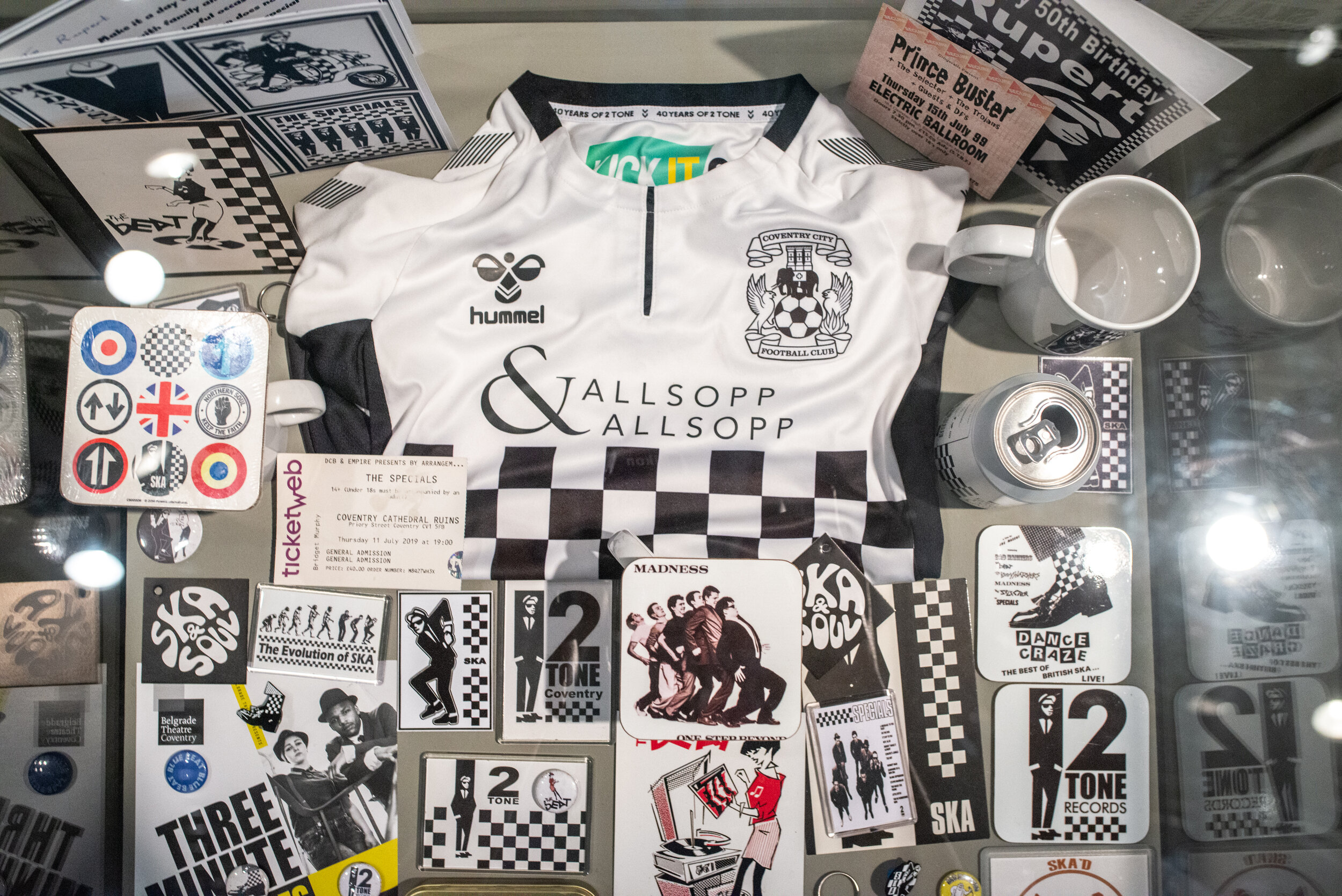

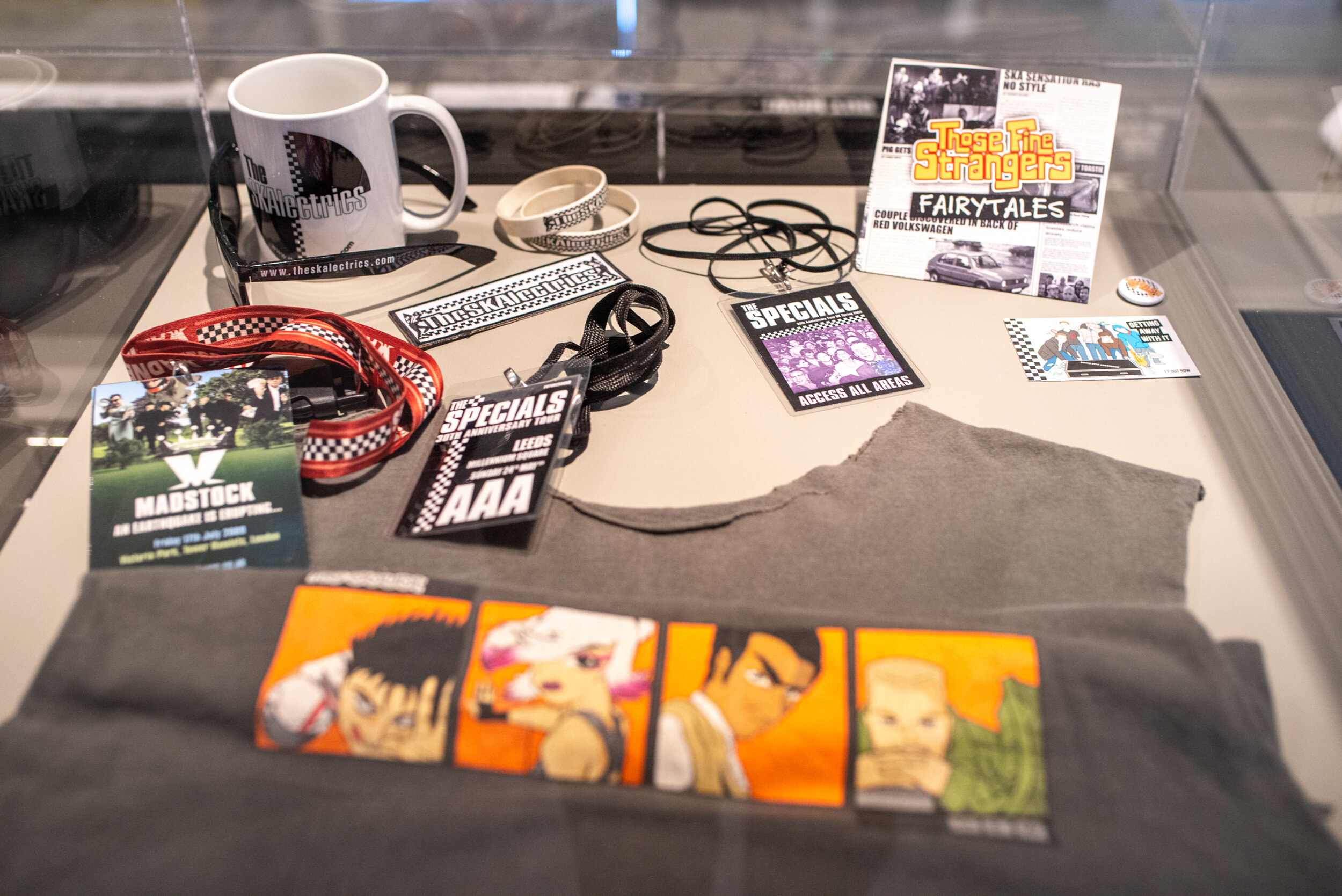
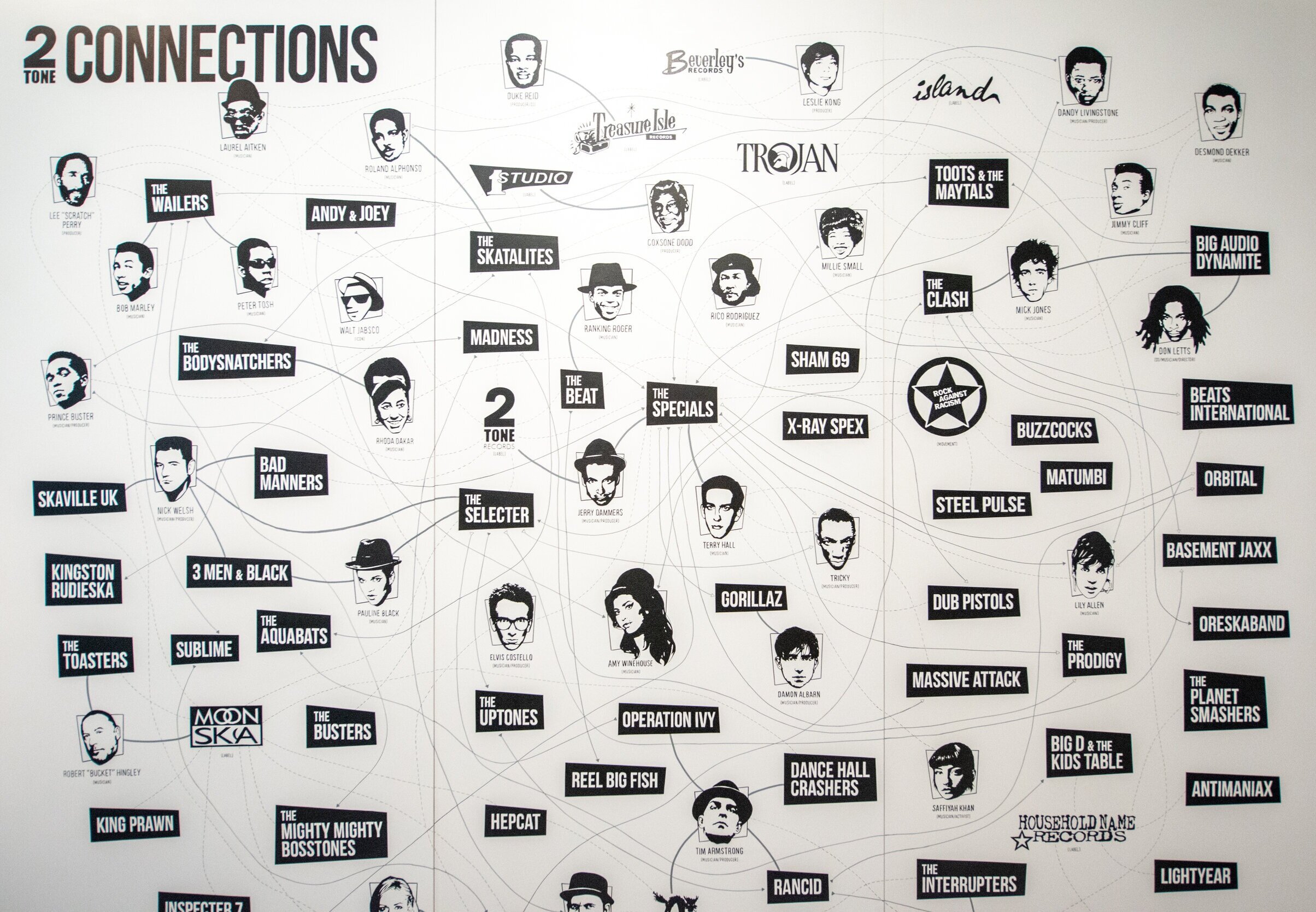
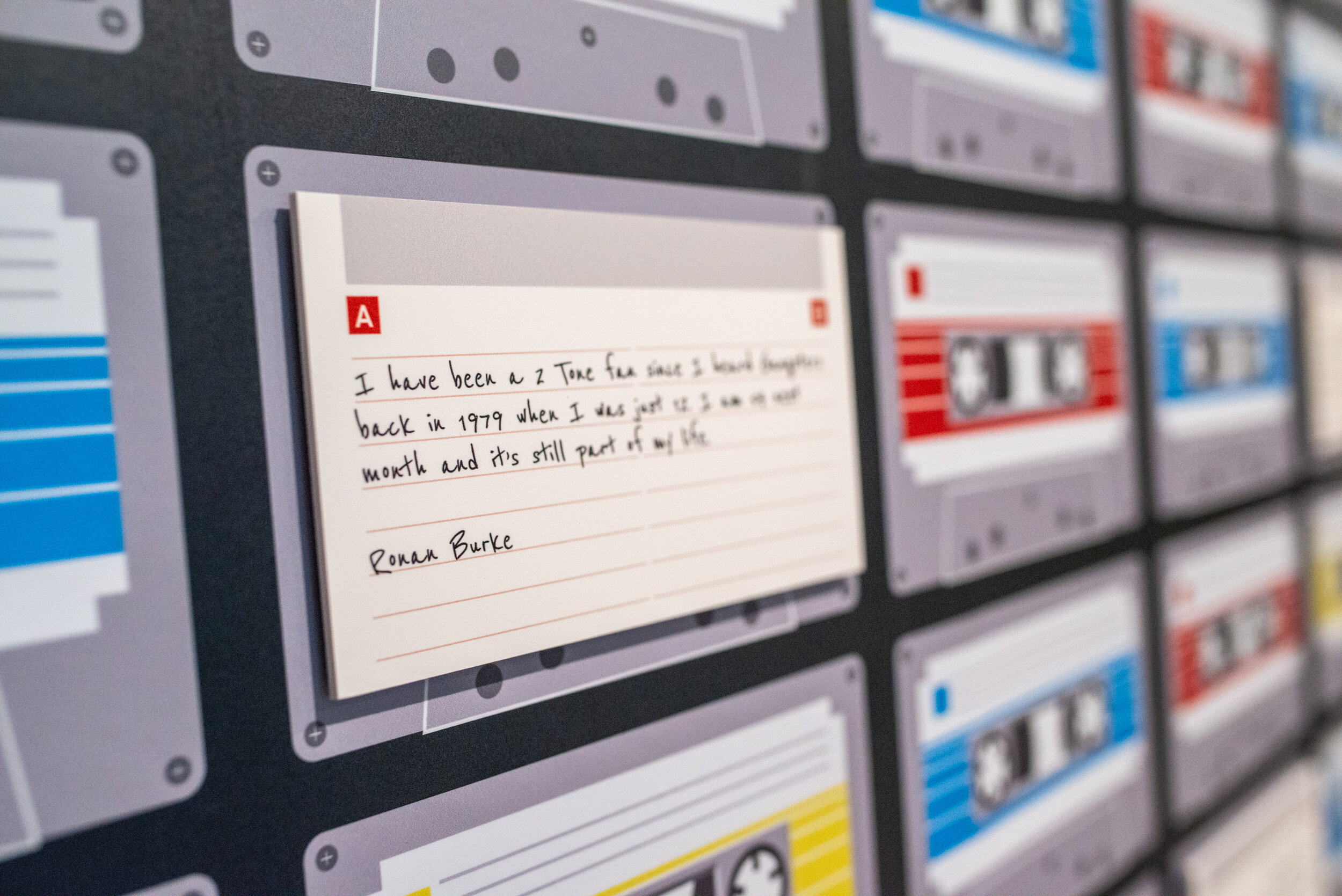
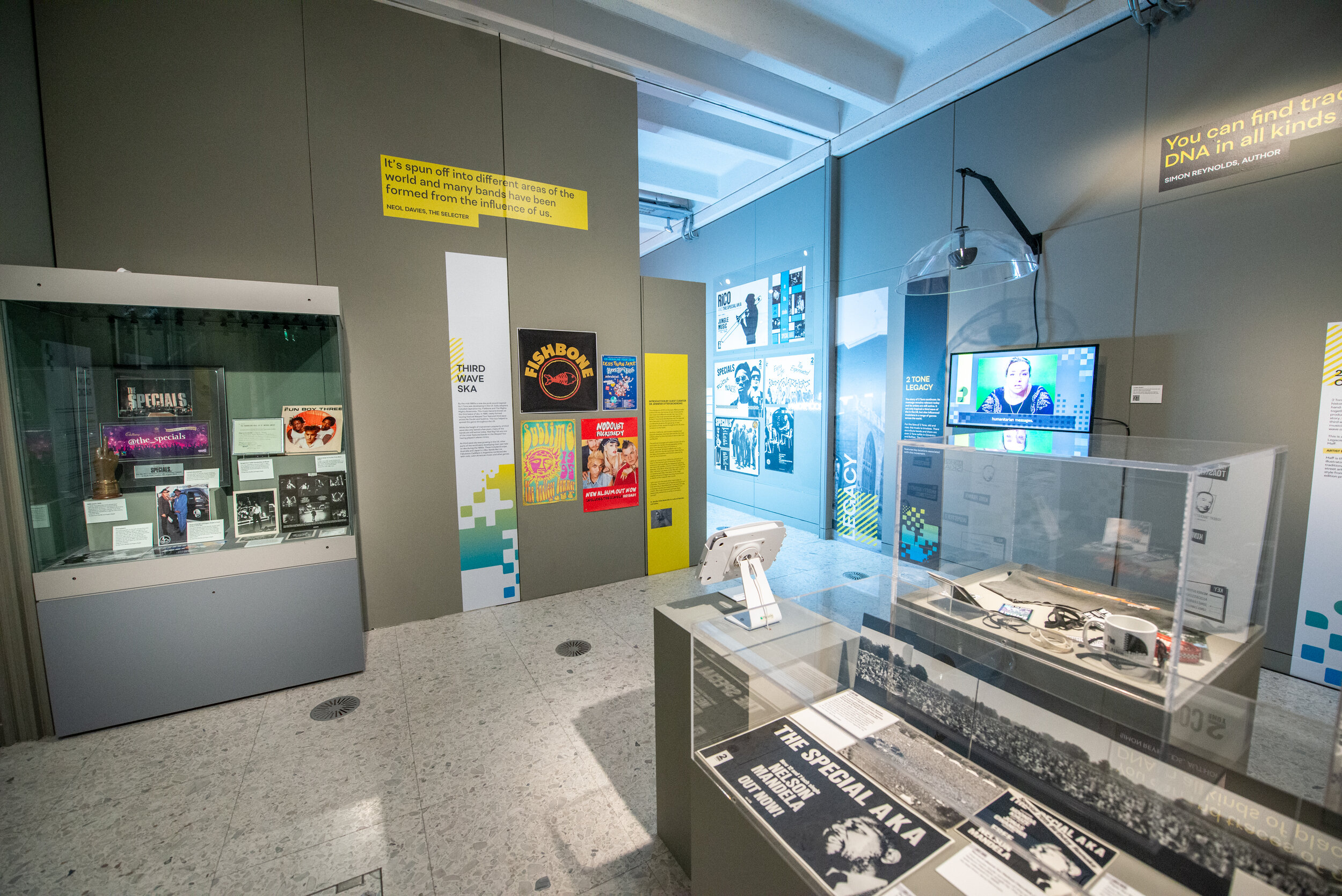
Since the last 2 Tone Records single was released in 1986, many of the band members have released solo albums as well as collaborating with each other and other artists.
The main thrust of the 2 Tone message was one of racial harmony and anti-racism, one still valid today. 2 Tone artists have been involved in a range of activism and charitable work.
Building on the success of the single Nelson Mandela, Jerry Dammers produced a double A side to raise funds for those starving in Africa. The track Starvation included artists from 2 Tone bands while Tam Tam Pour L’Ethiope featured musicians from Africa. In 1985 Dammers joined Red Wedge, a campaign by musicians and comedians to promote left-wing politics ahead of the 1987 general election.
Jerry Dammers continued his anti-apartheid work, founding the British Artists Against Apartheid and organising a series of concerts in honour of Nelson Mandela. The Clapman Common concert attracted 250,000 people and at the time was the largest anti-apartheid demonstration in the world. These concerts, combined with the single and boycotts of South Africa, helped to raise awareness of Mandela’s situation. He was finally released from prison in 1990. In 2014 Dammers received an award from the President of South Africa in recognition of his anti-apartheid work.
Third wave musician Mike Park created the Ska Against Racism tour which featured bands like Mustard Plug and Less Than Jake. Proceeds from the album of the tour went to charities working towards racial equality. The following year, in 1999, he founded the Plea for Peace Foundation to ‘promote the ideas of peace through the power of music’.
Last but not least the Coventry Music Museum opened in November 2013, having started out life as 2 Tone Central at Coventry University. Located on the Walsgrave Road, Ball Hill, the museum is run by volunteers, all unpaid. It’s part of the amazing 2 Tone Village, made by the fans for the fans.
The museum was the long term vision of Coventry music historian and journalist Pete Chambers, who, after creating the 2 Tone Trail around the city, looked for something more permanent to celebrate the vibrancy of 2 Tone music in the city that invented it.
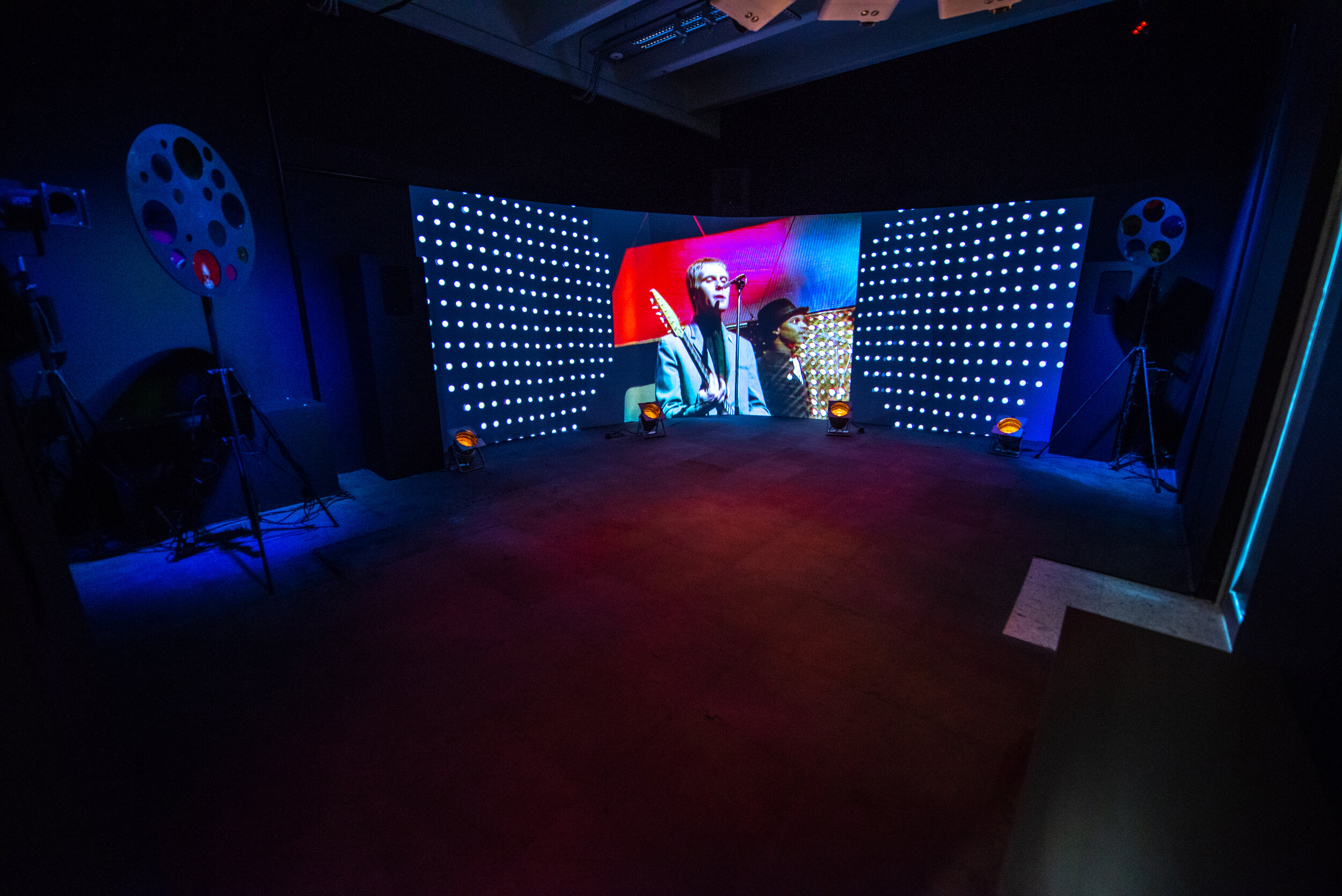
“The key legacy of 2 Tone for me was unity. We don't accomplish anything without each other. We don't accomplish anything alone, and we can't accomplish anything divided.”
— Scott Klopfenstein, Reel Big Fish
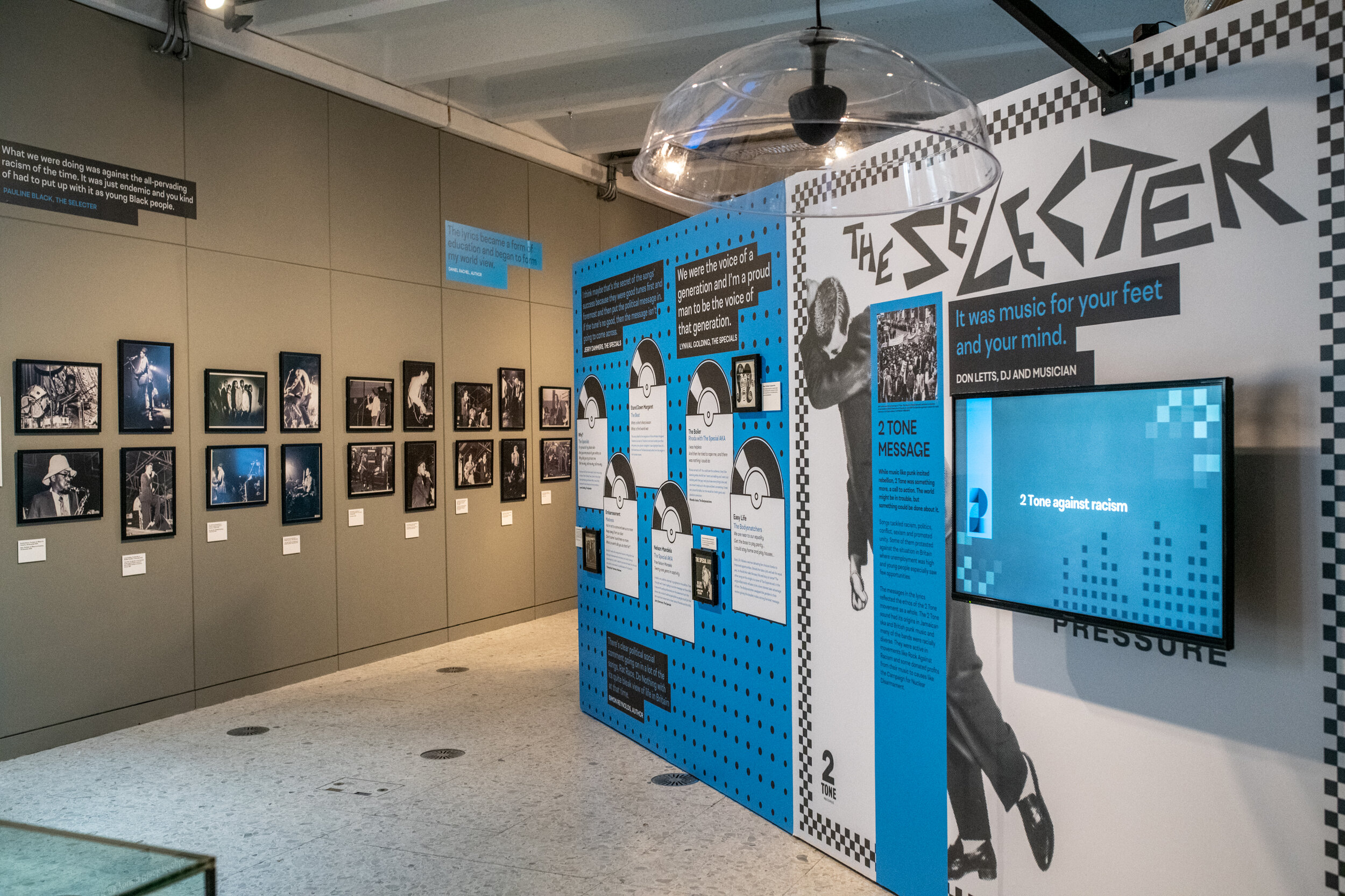
Reviews
“2 Tone was never just about the music – as this show in Coventry makes clear…
If the term ‘2 Tone’ is not immediately familiar to you, the music it’s associated with almost certainly will be. None more so perhaps than ‘Ghost Town’, released by The Specials 40 years ago this month: a lament for a Britain that, at the dawn of the 1980s, was haunted by recession, unemployment and inflation, and seemingly without any hope for the future. ‘Ghost Town’ might well rank as the bleakest song ever to have hit number one – and the more remarkable for being genuinely infectious too.”
— Tim Smith-Laing for the Apollo Magazine
“Pork pie hats and politics: Coventry pays tribute to 2 Tone legacy…
With never-before-seen artefacts and exclusive interviews with band members, it charts the formation of the record label that spawned the 2 Tone movement, focusing particularly on The Specials, The Selecter and other ska-influenced bands including Madness, The Beat and The Bodysnatchers.”
— Jessica Murray for The Guardian
For a more in-depth exploration of 2 Tone: Lives & Legacies, please visit the gallery spaces through Matterport:
This has been captured on a phone, please forgive any scanning glitches.
Drone Flythrough
Experience the exhibition like never before!
The drone has been operated by Firefly AI.
#2TONE2021
The exhibition has been organised in partnership with Coventry Music Museum.
The digital exhibition has been curated by Joy Corcec.
Installation images by Garry Jones.





